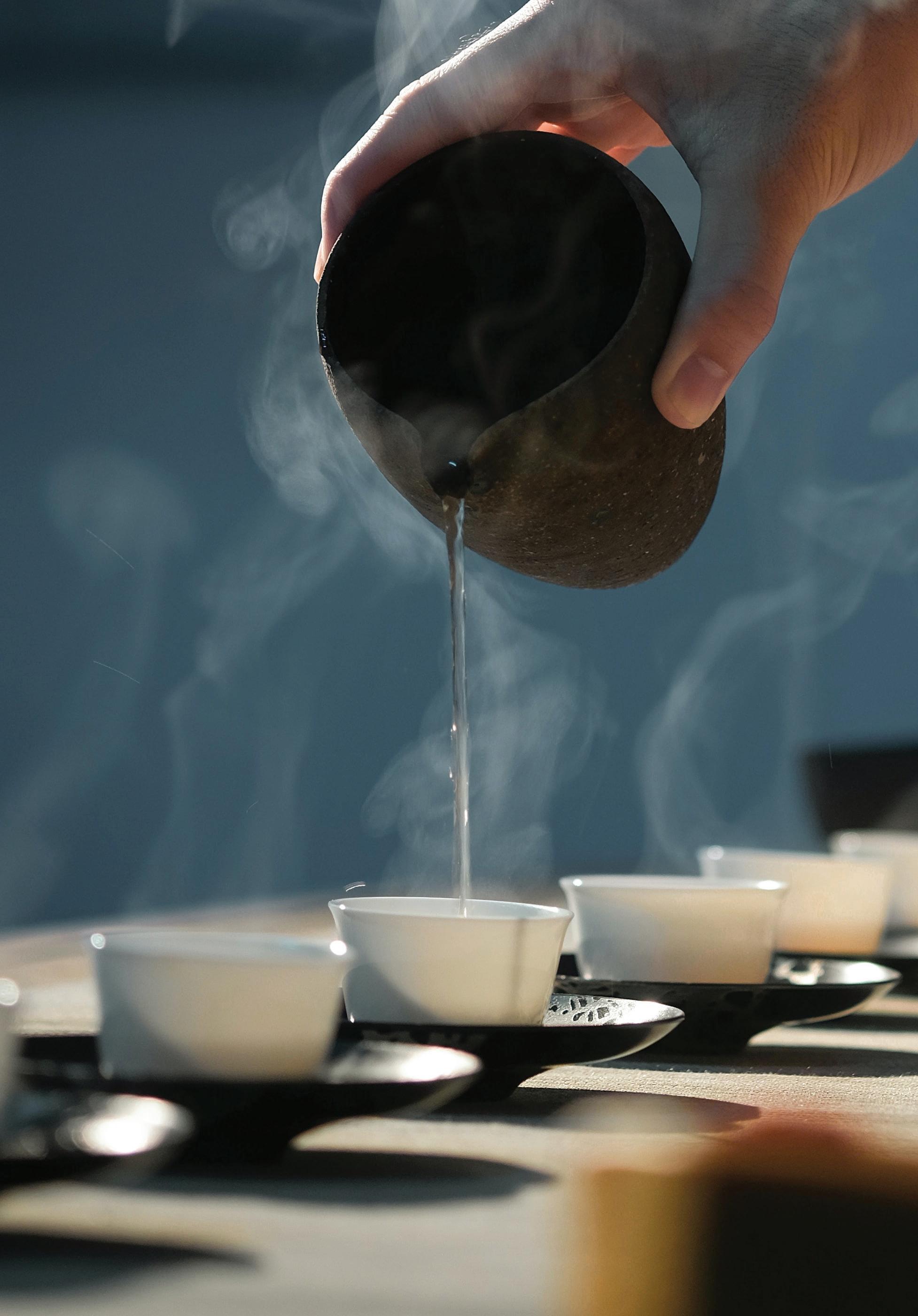








 SARAH HELLER
SARAH HELLER
MW,
MATHIAS CAMMILERI MS,
DR. NAMI GOTO: The State of Drinks Culture in Asia
SHINYA
TASAKI: An interview with a living legend of sommellerie ASI’S Year of ASIA & OCEANIA ASI MAGAZINEOCTOBER 2022 ISSUE #5

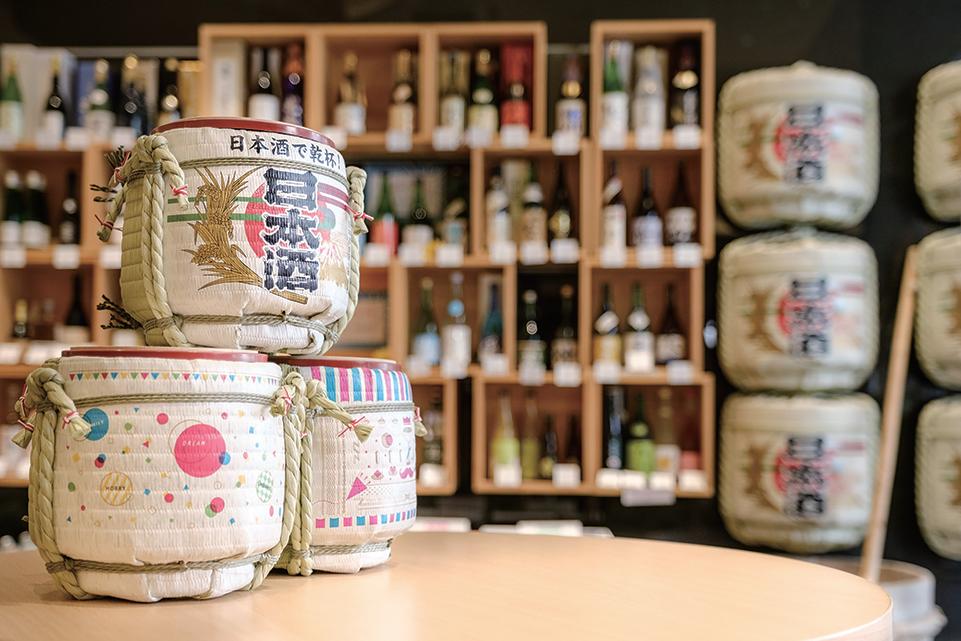
Published by: Association de la Sommellerie Internationale
Editor, Content Manager: Mark DeWolf
Director Partnerships & Marketing: Claire Berticat
Marketing Assistant: Xeniya Volosnikova
Administrative Assistant: Juliette Jourdan
Translation: Michèle Aström Chantôme, Manuel Negrete Design / Layout: Julia Webb Design
Photography: RF123, iStock, Unsplash, Ethan Chan,Louis Hansel, Andy Kho, Asem Tusupbayeva
On the Cover: Traditional sake service
Contributors: Jungmin Ahn, Sirayu Aupping, Nelson Chow, Jacques Chua Shu Hui, Tan Chuan Ann, Matthew Camilleri, Thibault de la Haye, Mark DeWolf, Nami Goto-Yamamoto, Sarah Heller, Chan Siang Jyun, Yuya Kondo, Ngurah Koriawan, Gerald Lu, Heidi Mäkinen, Jorge Nunes, Olivier Poussier, Ian Santos, Aki Sudo, Shinya Tasaki, Xeniya Volosnikova, Lincoln VU, Jessica Wood, William Wouters
ASI Executive Board
President: William Wouters Secretary General: Peer F. Holm Deputy Secretary Generals: Julie Dupouy-Young/ Beáta Vlnková Treasurer: Philippe Faure-Brac Deputy Treasurer: Samuil Angelov Vice-president for Asia & Oceania: Saiko Tamura-Soga Vice-president for Africa & Middle East: Michèle Aström Chantôme Vice-president for Europe: Piotr Kamecki Vice-president for the Americas: Marcos Flores Tlalpan Magazine inquiries: Mark DeWolf, ASI Content Manager markdewolf@asi.info
General Inquiries: www.asi.info info@asi.info
© Association de la Sommellerie Internationale. All rights reserved. No part of this magazine may be reproduced, stored in retrieval systems, or transmitted in any form or by any means without the prior written permission from the publisher.
President’s Welcome
ASI President William Wouters
A Conversation with ...
The State of Drinks Culture in Asia
Our Team
The Sommelier Contests Committee: Balancing the Past, Present and Future

Our Team
Shinya Tasaki: Interview with a Living Legend Feature Article
The Rise of Sommellerie: Exploring wine, sake, and whisky in Asia Feature Article
5 Wine Regions: Discovering the Emerging Wine Regions of Asia Feature Article
What the Locals are Drinking: 4 Regional Drinks Feature Article
5 Acclaimed Whiskies from Asia & Oceania to have on your backbar
Happenings
Learn. Challenge. Complete. ASI Bootcamp Malaysia
Somm Perspectives
How to recommend a wine
Make Me a Match!
Marrying Wine and the Soulful Flavours of Asia Feature Article
Singapore: Rise of island wine nation
Member News
3
Table of Contents
ASI MAGAZINE OCTOBER 2022 | ISSUE #5 6 4 12 16 20 31 24 34 40 48 54 58 36
Welcome!
The Year of Asia & Oceania
Over the course of the current ASI board’s term, we have focused our efforts on promoting the global nature of our association. In our first issue of ASI Magazine, we explored and celebrated sommeliers from all corners of the Americas, from Patagonia, Argentina in the south to sommeliers working on a small island off the coast of Newfoundland in Canada’s chilly north Atlantic waters.
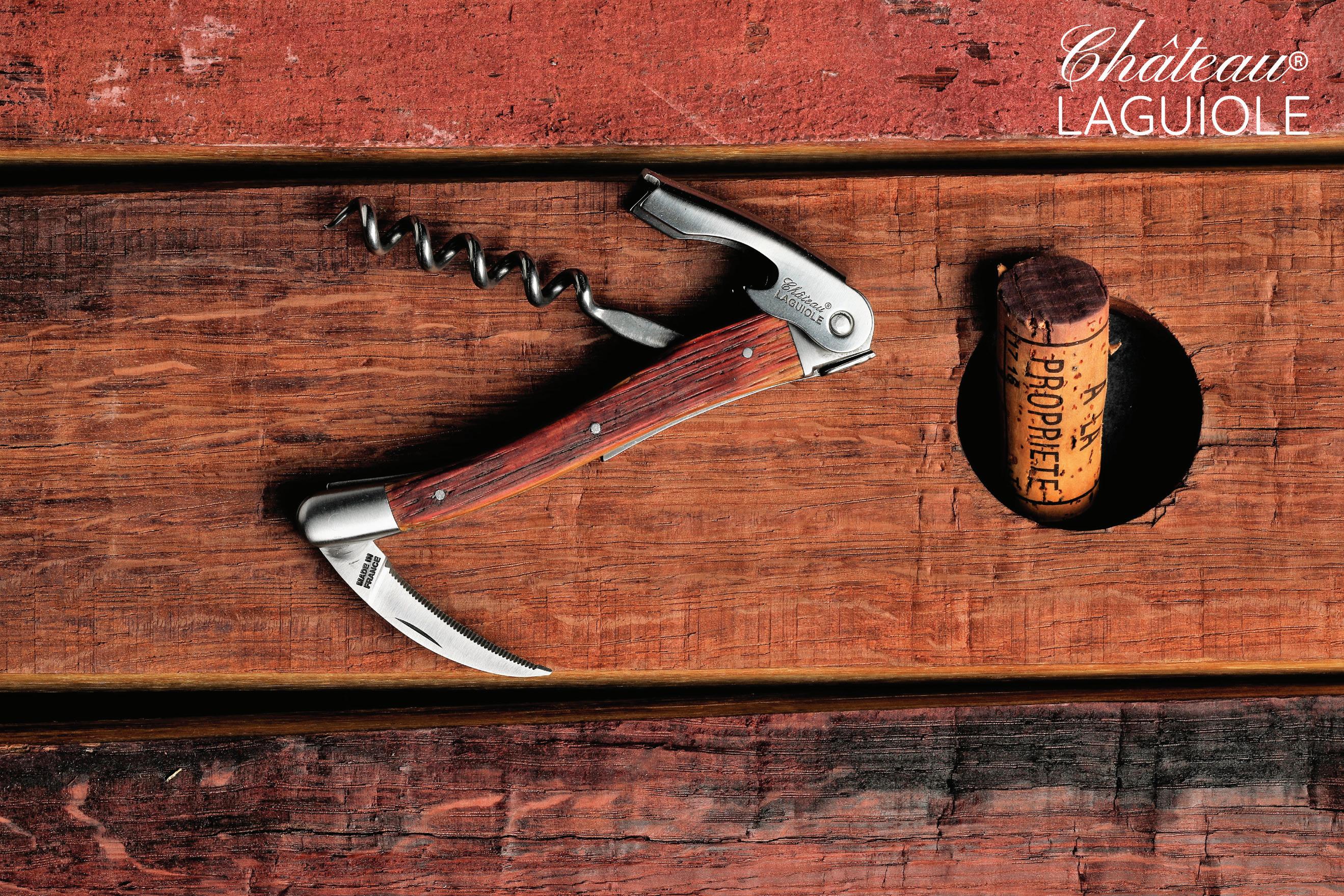
This issue, I am glad to report we are focusing on sommellerie in Asia and Oceania. In many ways this year has been and will continue to be ‘the ASI Year of Asia.’ We hosted our annual general meeting this past July in Nagoya, Japan where we welcomed Vietnam as an observer member. More recently, we held ASI Bootcamp in Kuala Lumpur, Malaysia. Building on the success of our first ASI Bootcamp held last year in Poland, we welcomed 46 ambitious sommeliers, mostly from Asia and Oceania, to study and learn from our top sommeliers, educators and invited guest speakers. The event was remarkably successful. Our team at ASI, along with our hosts the Malaysian Sommelier Association (SOMMLAY) combined to hold an intensive, and rewarding program, featuring an ambitious number of seminars, blind tastings, and demonstrations. The result was an event that challenged and inspired our sommeliers to continue to strive to be the best they can be. Many of the attendees are training for the upcoming Best Sommelier of Asia and Oceania, set to take place in Japan next month.
Many of those competitors have been inspired by the great sommeliers that have come before them, not least of which is Japan’s Shinya Tasaki. Shinya propelled sommellerie in Asia forward, when he won the title of ASI Best Sommelier of the World 1995 in front of an enthusiast audience in Tokyo. It was a seminal moment that put Japan on the world wine stage. The timing was appropriate as Asia was in its infancy of developing wine culture. More than a quarter of a century later, wine consumption in Asia has dramatically increased and the best sommeliers of the region rank amongst the very best in the world. In this issue we interviewed Shinya about his journey to becoming the ASI Best Sommelier of the World and his responsibility as a mentor to others aspiring to reach the same heights.
We are also pleased to welcome Hong Kong-based Master of Wine Sarah Heller, Singapore-based Master Sommelier Mathias Camilleri, and Dr. Nami Goto, a respected Japanese scientist whose work on sake and koshu have helped make Japanese fermented beverages in high demand around the world, as our guest editors. This trio of highly accomplished wine professionals will lend their insights on the current state of sommellerie and wine culture in Asia.
I encourage you to explore the pages of this edition of ASI Magazine, and revel in the diversity of food, drink and sommellerie culture in Asia and Oceania.
Cheers
William Wouters, President Association de la Sommellerie Internationale

ASI MAGAZINE OCTOBER 2022 4 ASI President William Wouters Welcome



finedininglovers.com finedininglovers.fr finedininglovers.com/es
TheState of Drinks Culture inAsia




ASI is pleased to welcome three industry leaders as guest editors of this edition of ASI Magazine. Sarah Heller, Asia’s youngest Master of Wine, has studied and worked in North America, Europe and Asia. Mathias Camilleri is a Master Sommelier who has worked at prestigious restaurants in Paris, London, and Singapore. Finally, Dr. Nami Goto-Yamamoto is an academic, researcher, wine judge and a living legend in the field of enology, fermentation, and brewing as a noted expert in the production of sake and Koshu wine.

ASI MAGAZINE OCTOBER 2022 6 Th e State of Drinks Culture in Asia A Conversation With ...
Photo: Barry / Unsplash.com
Sarah Heller’s journey to become a Master of Wine started with an interest in food. While studying at Yale University, she started learning to cook. Heller says “I became so engrossed that I started taking courses at culinary school in my spare time and eventually decided to take a semester off to work in a restaurant in Piemonte. My chef was a real wine lover and would drive me all over the countryside to taste local wines. Inevitably, I was then completely sold on the wine path and when I returned to university, I started working part time at an importer/distributor in New York.” The next big step in Heller’s career was working in Hong Kong with Debra Meiburg MW, one of Asia’s first Master of Wine. According to Heller “she (Meiburg) was able to use her position to really shape the regional conversation about wine and help the market grow which was a huge inspiration. After three years with Debra, I set out on my own to study for the MW and start to shape my own platform.”
Mathias Camilleri has a broad and diverse background with a Singaporean mom, an Italian grandfather and Tunisian born father. He is the winner of the UK Young Sommelier 2015, International Young Sommelier presented by the Chaîne des Rôtisseurs, as well as the UK Sommelier of the Year 2017. That same year he achieved Master Sommelier status. Of his ambitions Camilleri says “at the early stage in my sommelier career, I thought that competitions and exams would help me to perform better at work. Then it really triggered a love for competitions and challenges which pushed me in that direction.” The year following attaining his Master Sommelier designation Camilleri made the personal decision to move to Singapore. As he says, “having a Singaporean mom, I have always been interested about discovering more about my mom’s roots, and after almost six years in the UK (United Kingdom), I decided it was a good time for a new professional challenge.” Camilleri joined CÉ LA VI in Singapore as Head Sommelier, befor e taking a position as Senior Beverage Manager at the iconic Marina Bay Sands in 2019. In 2022, Mathias Camilleri joined Singapore’s COMO Group as Ass ociate Director F & B Operations. Recently, Camilleri was a featured tutor at ASI Bootcamp in Malaysia.

Conversation With ...
State of Drinks Culture in Asia


ASI MAGAZINE OCTOBER 2022 7 A
The
Heller and Camilleri are both part of a new breed of wine professionals, witnessing the changes in wine culture in Asia through a new lens. While wine consumption and collecting has been led since the 1980s by the likes of Japan, Singapore, Hong Kong and Taiwan. Historically, status has played a role in the consumption of wine in Asia, but according to Heller, “it’s only part of the story. One thing to bear in mind is that wine is generally more expensive in Asia, both relative to other forms of alcohol and relative to the price of wine in Europe, and so for somebody to decide to invest in drinking and learning about wine there needs to be a strong motivation. That could be about status, but it’s often more about showing respect — historically, wine has almost always been consumed in groups in Asia and the nature and quality of the bottle you bring is an indicator of your opinion of your drinking companions.”
Heller adds “consumption among a broader demographic is a much more recent phenomenon. Clearly a major factor in the explosion of interest in wine in the region was the Hong Kong government’s 2008 decision to remove duties and ease imports of wine, which made the consumption, collection, and trading of wine more accessible and potentially very lucrative. However, the fact that genuine interest in wine has outlived this initial commercial burst suggests that wine culture has taken hold on a deeper level in these markets and several others. Certainly, wine education and events, which have become so ubiquitous that some of us in the region almost take them for granted, have helped people develop a deeper appreciation for wine and its complexity.”
One of those supporting education is Camilleri, a tutor at ASI Bootcamp in Malaysia, who says “I wish I could do more. With the lack of manpower, I have less time for mentoring to the broader sommelier community, but on a positive note, it gives me more time to spend with the sommeliers and restaurant teams I work with. Seeing them spread their wings professionally is very satisfying.” Camilleri adds of the growth of wine culture in Singapore, “I have been in Singapore for four years
now, and I cannot believe how fast Singapore has grown. The wine market is spoiled with a huge diversity of wines coming from all over the world, served by dedicated wine professionals to genuine wine lovers and foodies. Singapore is one of the most vibrant places I ever worked. The vibrancy of sommellerie in Singapore, comes with a vibrant restaurant scene. Despite the challenges from COVID, restaurants from different styles have been popping up lately ... I imagine that this and the amazing diversity of sommeliers working hard in Singapore have formed a strong core to contribute to the current success of Singapore as one of the best wine places in Asia and maybe in the future one of the best in the world.”
Heller acknowledges the roles of celebrity chefs “the very embrace of Michelin as a measure of restaurant quality almost means wine necessarily becomes part of the equation. However, she cautions “what I still haven’t seen happen to a great degree is really local, casual restaurants embracing wine (other than allowing BYO) — there are still no great everyday wine lists at Dai Pai Dongs or hawker centres, at least not in my experience.”
Will there be growth in Asian-produced wine, and subsequent development of a broader Asian wine culture and sommellerie, as a result? Camilleri says. “I can’t predict, but I do believe there is a future for Asian wines, specifically in China and Japan, but it will depend on whether the world will open their minds (to wines from Asia). I have tried some incredible wines coming from there that are worth keeping an eye out for.” As far as recognition he says, “anything is possible” pointing to the success of Japanese whisky in developing a local and international market, thanks in part to the movie “Lost in Translation” featuring Bill Murray’s character advertising Suntory’s whisky with the memorable quote: “for relaxing times, make it Suntory time!.” Camilleri also notes Suntory’s Yamazaki 12 Years Old Whisky winning Gold at the International Spirits Challenge in the United Kingdom in 2003 as a seminal moment for Japanese Whisky’s growth and recognition. Will the same happen for Asian wines, or will it get ‘lost in translation’?
ExploremoreabouttheevolutionofdrinkscultureinourFeatureArticlefoundonpage20, andthedramaticriseofwineconsumptionandsommellerieinSingaporeonpage54.
ASI MAGAZINE OCTOBER 2022 8 The State of Drinks Culture in Asia A Conversation With ...
A Conversation with Dr. Nami Goto-Yamamoto

Dr. Nami Goto-Yamamoto is an academic researcher who is currently both President of the Japan Research Association for Sakeology and the Japanese Society of Enology and Viticulture. She was previously the President, National Research Institute of Brewing and as a researcher has examined sake and wine yeast, anthocyanins and tannin in grapes and wine, and DNA analysis of grapevines, with speciality in the Japanese cultivar Koshu. She was even the chief judge of the Japan Wine Competition for seven years.
ASI asked Dr. Goto-Yamamoto for her thoughts on the present state of wine, sake culture in Asia with a particular focus on Japan.
ASI: Throughout the world, the locavore movement is gaining strength. Are you seeing Japanese consumers placing more value in locally made beverage alcohol?
Dr. Nami Goto-Yamamoto (NGY): Originally, sake had been produced and consumed locally. But after World War II, big companies’ sake, called national brands, became popular. Thus, many small sake breweries went out of business. During this difficult period, some small sake breweries have tried to differentiate their products from national brands, and local sake has become popular again.
Additionally, there is another locavore movement in sake, that is the provenance of the ingredient, rice. Unlike grapes, rice can be transported over long distances. So, Yamadanishiki, a famous rice variety, harvested in famous sake-rice cultivating regions is distributed all over Japan. Some sake
breweries, however, are committed to using only locally cultivated rice. Such activities lead to protecting local agriculture, the natural environment, employment, etc., which contribute to SDGs (Sustainable Development Goals)!
Shochu has been produced and consumed mainly in the southern Kyushu region, and this tendency continues till now, but shochu consumption has now spread throughout Japan.
In the case of beer, there were only big breweries in Japan. However, small breweries started in 1994 when the license rule of beer production was amended. After the number of small breweries increased suddenly, it declined once, and it increased again recently, because of the craft beer boom and improvement in quality. As a result, local craft sake and beer have gained certain popularity now in Japan.
Wine was a drink for a limited number of consumers for a long time. Now thanks to the lowering of custom, reasonably priced imported wines are popular. Japan wine is only 5 per cent of wine consumed in Japan, and some part of it is consumed locally, but the main part is consumed by Japanese-wine lovers all over Japan.
ASI: As a scientist, responsible for looking at fermentation with an analytic eye, do you ever struggle with the question of the value of retaining tradition methods of production versus suggesting new techniques driven by scientific discovery? Is this struggle amplified in a country, such as Japan, known for its respect of tradition?
With ...
ASI MAGAZINE OCTOBER 2022 9 A Conversation
The State of Drinks Culture in Asia
A Conversation With ...
NGY: I personally don’t have that struggle but it was true 100, or even 50 years ago. For example, Sokujo moto for sake making was developed in 1909, but it became widely used only after World War II. Many sake breweries believed that traditional Kimoto or Yamahai was indispensable to producing their favorable taste of sake. This tendency continues even today in some breweries, but many motivated sake breweries adapt to or even develop new techniques.
ASI: In the wine world, there has been an increased interest in ‘natural’ wine. Are you seeing a parallel interest in sake, made using wild bacteria, yeast such as Kimoto and Yamahai?
NGY: Interest in Kimoto and Yamahai, as well as fermentation without yeast addition, which means fermentation by natural habitat yeast in a brewery have increased recently. It is a controversial issue as is the case of wine. Naturally or traditionally made sake attracts a certain kind of consumer, and it is said to contribute to the diversification of sake. However, it is not a reproducible technique and may cause off flavours or spoilage at the worst case. I think the natural-oriented movement is an antithesis to a highly industrialized society, but it is not appropriate to deny all scientific knowledge and techniques.
ASI: In addition to your work with sake you are leading researcher of the genetics, production of Koshu. You were even the Chief Judge of the Japanese Wine competition for seven years. How has Koshu evolved over the last decade? What improvements in terms of viticulture and vinification techniques have you witnessed/ been part of developing?
State of Drinks Culture in Asia
NGY: Koshu wine has changed dramatically over the last two decades. In the old days, many Koshu wine were oxidized, had a bitter taste, and lacked characteristic aromas. As a result, many of them were semi-sweet to mask the bitterness. Nowadays, typical Koshu wine has a moderately fruity flavour, elegant body, and fresh acidity. There are also various styles of Koshu. Some has a citrus flavour like Sauvignon Blanc, and some wines are barrel fermented, sparkling, well-aged, or even made into orange wine. Improvement in enological techniques has contributed to this
change, such as avoiding oxidation, temperaturecontrolled fermentation, using fermentation aids, and controlling YAN (Yeast Assimilable Nitrogen), as well as using suitable yeast strains. In addition to the introduction of outside information, a lot of research has been carried out to achieve these improvements. Education programs for wineries by universities and research institutes have played important roles, too. In addition, I think the Japan Wine Competition has given incentives for wineries (to produce better wine).
ASI: There has been some vineyard development in countries, such as Thailand, not historically linked with wine. Do you see the spread of viticulture and winemaking throughout Asia, beyond traditional counties such as China and Japan, as a positive in terms of the growth of wine culture in the continent? Or should there be more emphasis on the improved development of beer and rice-based fermented beverages in countries that struggle with the ecological fit of grapes vines?
NGY: I don’t think Japan will become a major wine producer because of the limitation of climate and farmland. Even though its volume is small, highquality Japanese wine, which is produced with great effort under difficult conditions, interests many Japanese consumers. As such this will contribute to an increase in wine culture…. this increase in consumption and interest in wine in Japan seems due to the change of eating habitats in Japan because of globalization. Also, wine has a developed a good image in Japan, as it is seen as being stylish and healthy. In addition, the lifestyle of vignerons is attractive to many people which in turn causes an increase in the number of small wineries.
On the other hand, sake is traditional and goes well with Japanese food, but it has a bit negative image, seen as old-fashioned, particularly among young people. So, the production/consumption of sake and the number of sake breweries have decreased a lot. The reduction of traditional alcoholic beverages, e.g., wine in France and beer in Germany, are observed worldwide. It is reasonable to cultivate rice and make sake from rice in the wet climate of Japan. However, it may be not sufficient to attract the new consumer in Japan.
10 ASI MAGAZINE OCTOBER 2022
The
Singapore will be a must for wines and spirits in 2023

 By Vinexposium
By Vinexposium
At a time when wine is still looking for its big market, at a time when all eyes are on Asia, Singapore's port activity has just beaten its freight volume record and is thus establishing itself as the epicentre of world maritime trade.
As a Southeast Asian city state strategically located at the crossroads of historically established and major developing markets, from Australia to Japan, China to India, Singapore has undeniably become the best vantage point for taking the pulse of wine globalisation.
With no local production, all the wine consumed by the population is imported . Driven by the growth of its middle class, the Singaporean market is experiencing a promising expansion: wine consumption doubled between 2000 and 2010 while imported volumes increased by 242.5% between 2018 and 2020 (AD'OCC, 2022). A market with unquestionable potential, reinforced by the development of tourism and the presence of a large expatriate community with high purchasing power. As the cocktail capital of the world, Singapore is also seeing a marked increase in its consumption of spirits, driven by its ecosystem of cocktail bars that make the city state's reputation
But it is above all its modern infrastructure, its strategic position and its strong attractiveness, which extends as far as Australia, that make it a key logistics and distribution platform for the re-export of wines and spirits in the Asia-Pacific.
As proof of this, Vinexposium, which has been present in the region for 20 years, is moving to Singapore in 2023 with Vinexpo Asia, with the aim of strengthening its presence in the Asia Pacific region Nearly 1,000 exhibitors from many wine producing countries will meet from 23 to 25 May 2023 in the heart of the emblematic Marina Bays Sands for the most eagerly awaited professional event in Asia.
vinexpoasia

.com | #vinexpoasia
THE SOMMELIER CONTESTS COMMITTEE BALANCING THE PAST, PRESENT AND FUTURE
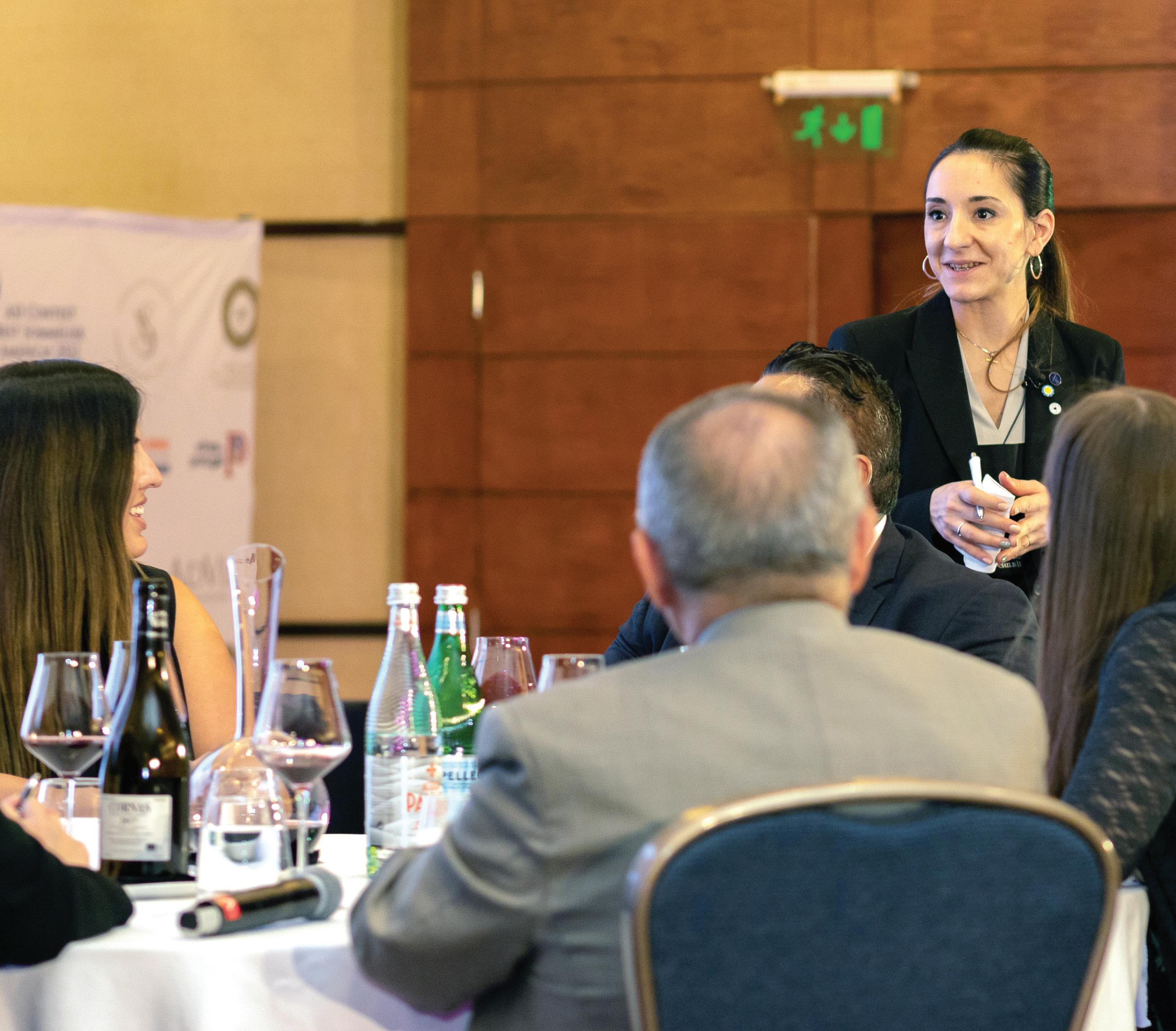
ASI MAGAZINE OCTOBER 2022
CONTESTS
There are certain pinnacles of sommellerie, and the title of ASI Best Sommelier of the World, at the very top of this list. Sommeliers from across the world compete in regional, national, and continental contests for the chance to win the title. It is the responsibility of the ASI Sommelier Contests Committee to create the written tests, service tests, and blind tastings for the continental and world contests. It’s a job the committee co-led by former ASI Best Sommelier of the World champions, Olivier Poussier and Shinya Tasaki, takes very seriously. It’s also a committee that has gone through evolution, incorporating new members with new ideas and thoughts on how sommeliers should be judged. We asked Olivier Poussier, and Heidi Mäkinen MW, one of the committee’s newest members, to share their thoughts about the committee.


Our Team
Committee : balancing the past, present and future

ASI MAGAZINE OCTOBER 2022 13 The Sommelier Contests
Members of the ASI Sommelier Contests Committee at the 2022 ASI Best Sommelier of the Americas contest
Photo: Contributed
Our Team
Sommelier Contests Committee : balancing the past, present and future
ASI: As director of the Sommelier Contests Committee (SCC) you work with sommeliers from around the globe. How difficult is it to come to consensus on issues when you have so many people to coordinate with?
Olivier: Poussier (OP): William (Wouters) gave Shinya (Tasaki) and I the confidence to form a technical committee. We have a great committee made up of good men and women. Everyone is pulling in the same direction, and we all want to serve our profession as well as possible. We all have a common interest in making sure that the tests and competitions are impeccable.
ASI: In the past the SCC has been made up primarily of prior Best Sommelier of the World contest winners. What was the impetus to broaden the committee to include some other notable sommeliers? You have some members that won their titles decades ago. Why do you feel it is important to have a connection to the past as you evolve your committee with a view towards the future?
OP: The committee is made up of titled sommeliers, but we have integrated people who bring us another vision. Heidi, for example, who is a Master of Wine, helps us a lot in her reflection and her vision of tasting. This association between older and younger generations is fundamental for the quality of the committee. We learn from each other, and we grow as a group. The unity of the committee is very important. Shinya and myself are watching over it.
ASI: As one of the newest members, do you think having more women on the team provides a positive alternative perspective or should we simply view a committee such as this as gender neutral?
Heidi Mäkinen (HM): I wish we lived in a world where we wouldn’t need to think of gender issues and where we could acknowledge gender is nonbinary. However, this isn’t the reality yet, so I firmly believe modern-day organisations and companies need to take various social responsibilities in consideration. Wine and hospitality industries have for a long time been seen quite male-dominant and having a more gender-equal SCC might encourage more women to enter the industry and test their knowledge and skills in the competitions. We should make the whole sommelier world including competitions accessible to all regardless of their
physical, social, ethical, or ethnic backgrounds and setting an example as a committee is an important aspect of this.
ASI: The sommelier world is constantly evolving and growing. We have more and more people from around the globe representing different countries, religions, people of different genders and sexual identities becoming and succeeding as sommeliers. How can a committee like the SCC become more inclusive?
HM: Firstly, by acknowledging our world is evolving and secondly, by adapting our ways of work to align with it. ASI has recently published its guidelines that are useful for professional development and competition preparations. These guidelines are a constant work in progress, adapting to the changing world around us. SCC takes these guidelines into consideration when planning competitions and how each task is being judged. Our task is to judge the professionalism, knowledge, and skills of the competitors, not how they identify themselves nor what their backgrounds are.
ASI: As the sommelier world is becoming bigger and more global in nature, is there a responsibility when testing sommeliers to expand the questions beyond classic regions, styles, beverages and incorporate more knowledge of the broader wine, spirits, and beverage world.
OP: Of course, we consider the evolution of the sommelier profession and the whole committee must be up to date on the latest news in the world of wine and the evolution of the vineyards. Other drinks, fermented or not, brewed or distilled, are also part of the knowledge that we must have. Social networks allow sommeliers to be well prepared and the committee must always be a little ahead of the game.
ASI: The question of performing in a second language is a perennial source of discussion amongst sommeliers. Has there been discussion around eliminating this requirement or changing it to be more reflective of our global sommelier community?
OP: This is a question that comes up frequently, but I would say that this is the perfect instance of the value of looking at the past as a guide for the present and future. It was not that long ago, when all the top sommeliers at our world contest
14 ASI MAGAZINE OCTOBER 2022
The
spoke one language, French. It was decided then to create an equal platform by making all sommeliers compete in a language that was not their native tongue (English, French, or Spanish). As such, while challenging for some contestants, it is to borrow a sporting term creates ‘a level playing field.’
ASI: We have two major contests coming up. Best Sommelier of Asia & Oceania and the Best Sommelier of the World. Can you tell us how long it takes the SCC to prepare examinations for these contests? How important is for you to incorporate knowledge of local beverages, food, culture, into your tests?
OP: With respect to the first question, it takes months of preparation. We have a data bank of questions which is constantly being updated to reflect changes in laws and trends. With respect to the second question, it is exceptionally important for us to adapt our contests to be reflective of the host countries cultures, traditions, and beverages.
ASI: Most sommeliers will never compete for a continental or world title. Why are contests like this important for the development of sommellerie?
OP: I think this can be summarized in just a few words…inspiration, aspiration, and visibility. Contests inspire sommeliers and make them aspire to be the best they can be. The contests also offer visibility to our profession, allowing press, consumers and the rest of the hospitality trade understand the value of sommeliers. It also builds a sense of community amongst our association and the competing sommeliers.
HM: Competitions are one method of professional development along with various courses, trainings, and educational programs. According to my experience it’s often easier to study with a set goal or a built structure in mind. Competitions offer a unique opportunity to exchange with and learn from others, challenge oneself in various situations, and learn how to perform and present in front of an audience. They are a great way to test one’s level of expertise amongst people working in the same industry. Preparing for competition tasks also helps sommeliers in their everyday life on the floor, and in the industry where sommeliers are increasingly asked to do presentations and give public speeches.
ASI: Sommeliers that compete on the world stage demonstrate amazing amounts of skill and knowledge. Beyond the technical requirements and the knowledge, how much value do you place on personality. Is that a measurable part of your scoring system? How important is it to you as a judge to want to be served by the sommelier?
OP: It’s very important. You don’t want a robot to win the title of ‘Best Sommelier.’ A great sommelier provides not only insightful knowledge but delivers pleasure to a table in how they craft the dining experience. They must be barometers of the customer’s mood, adapting their mannerisms and speech appropriately. They also must work with humility and empathy, so every guest gets the experience they desire. While these may seem like intangibles, we have several people judging the contest, each with their own opinions, so in this way we can place a measurable value on it.
HM: As someone who has had amazing food and wine experiences, more than one would deserve in a lifetime, the thing that gets me most excited in restaurants these days is the service and the atmosphere. This is also something we increasingly emphasise amongst SCC. We appreciate confidence and humility, friendliness and smiling, willingness to make suggestions, yet also ability to listen to the customer and valuing their time and preferences.
ASI: When you think about who should be the Best Sommelier of the World, or Best Sommelier of Asia & Oceania, for example, what qualities do you think they should possess?
OP: Knowledgeable. Professional. Gracious. Humble. Empathetic.
HM: A great sommelier is someone who enjoys their trade, is passionate and curious about the industry they work in, and ready to put in the work to become better everyday. All of this should be done with a great heart, to be able to offer their customers the best possible and memorable experience each time.
Our Team
Committee : balancing the past, present and future
ASI MAGAZINE OCTOBER 2022 15 The Sommelier Contests
Shinya Tasaki (田崎真也)

Interview with a Living Legend
Shinya Tasaki (田崎真也) needs little introduction. Tasaki gained worldwide attention, after winning the title of ASI Best Sommelier of the World 1995 in front of an enthusiastic home audience in Japan. He would later gain even broader fame as the subject of hundreds of interviews, the author of various books, and by being the first and only non-professional chef to win on Iron Chef, the legendary Fuji TV culinary competition.
As a result of his accomplishments, Tasaki was honoured by the Emperor of Japan with the prestigious Yellow Ribbon Medal of Honour awarded to individuals who, through their diligence and perseverance while engaging in their professional activities, became public role models.
Tasaki went on to lead ASI as president of the association from 2010 to 2016 and is currently co-director, along with Olivier Poussier, of the ASI Sommelier Contests Committee. ASI asked Shinya about his journey to becoming the ASI Best Sommelier of the World, and the responsibility it has put on his shoulders to be a mentor for young sommeliers in Asia.
ASI: Attaining the highest level of any field requires a mix of attributes and skills, not least of which is motivation and dedication. Please describe how you prepared for the Best Sommelier of the World contests?
Shinya Tasaki (ST): What motivated me to enter the competition for the Best Sommelier of the World was an encounter with Mr. Jean-Luc Pouteau, the winner of ASI Best Sommelier of the World 1983 contest. While I had won the title of the Best Sommelier of Japan, also in 1983, I realized the international competition is on another level. After that meeting, I set for myself the goal of becoming best in the world.
Back then, in the days before the internet, we had no effective tools for gathering information. Living in Japan, I was near impossible to obtain the study materials or samples needed to prepare myself for the contest. As such, I traveled abroad, mainly to wine-producing countries, where I practiced wine tasting and gathered the necessary information required to prepare for the written tests.
I took up the challenge in 1986 and 1989, and in my third attempt in 1995, I finally won the title of the Best Sommelier of the World. During those years of preparation, I tasted at least 10,000 wines per year, summarized the important points of the materials I collected for written tests in a notebook, and in the run-up to the contest, I took two months off from work and lived apart from my family in order to concentrate on memorizing the necessary information. As for training for service skill tests, I actually served VIPs from around the globe as the chef sommelier at a prestigious hotel, trying to get used to offering an appropriate service in a tense atmosphere.
ASI: Please describe the feeling of winning the contest. Was it relief? Did you feel you had accomplished all your goals with this win?
ST: In my third attempt in 1995, I definitely wanted to be the first Japanese finalist, so that I could pass on what I experienced to the next generation. I had never expected to win, so it came as a total surprise to me.
The competition was held in Tokyo, and I’m glad that I was able to share the emotional moment with my family and the many people who supported me, including those from restaurant and hospitality businesses and the members of the Japan Sommelier Association.
Shinya Tasaki: Interview with a Living Legend 16 ASI MAGAZINE OCTOBER 2022 OurTeam

ASI MAGAZINE OCTOBER 2022
Shinya Tasaki: Interview with a Living Legend 17
Our Team
Shinya Tasaki Photo: Contributed
ASI: As the only person from Asia to have won the title of Best Sommelier of the World, do you feel a responsibility to support other sommeliers from Asia aspire to similar success?
ST: During the 15 years from the domestic contest until the challenge in 1995, I spent a lot of time collecting information from various sources. The moment I was crowned the Best Sommelier of the World, however, I realized I would become a source of information myself.
Over the following three years or so, I was interviewed for magazines more than 300 times a year and appeared on TV and radio. As I did these interviews, I gradually became aware of the responsibility that I carried with my words.
In Japan, the word “sommelier” rapidly became widespread because of my accomplishment, and the number of aspiring sommeliers has increased. Presently, the Japan Sommelier Association boasts a membership of over 17,000 members. It certainly is of great significance for the sommelier community in a country to produce a winner of the Best Sommelier of the World competition.
ASI: Did you feel at a disadvantage as a nonEuropean when competing, given the center of sommellerie and the wine industry had long been in Western Europe?
ST: In the 1980s, when I was preparing for my first attempt, there was not a lot of variety of wines available in Japan for practicing tasting. In addition, obtaining materials and references for written tests was almost impossible. I had no other choice but to go abroad, and I felt I was at a disadvantage in terms of time and economics.
In the 1990s, however, a variety of quality imported wines became available in Tokyo, which enabled me to practice comparative wine tasting, setting glasses of wines from around the world side by side on a table. I still had to travel abroad to obtain wine books and other references, but as I had more and more opportunities to taste wines, I came to think that perhaps I had an advantage over European sommeliers in that I had a greater opportunity to taste wines of the Oceania region, for example.
ASI: In your role as co-director of the Sommeliers Contest Committee have you seen or made any changes to the continental and world competitions to make them more inclusive and reflective of a broader world of sommellerie?
ST: I would ask what is the purpose of a sommelier contest? I think it’s not just about choosing the best sommelier at that point in time but also providing a platform for showing a future role model for sommeliers and sharing the ideal across the international sommelier community.
In this regard, the content of tests given to competitors should be evolved with the times. Also, we should always be aware that a sommelier is essentially not a wine critic but a professional in customer service.
ASI: As sommellerie expands will knowledge of non-European beverages, for example sake, become more important in how you evaluate a sommelier’s knowledge?
ST: In today’s information society, people can learn about foods, cuisines, and ingredients from all over the world, including how to eat or cook them. Therefore, sommeliers need to acquire knowledge about beverages enjoyed in different countries across the globe — let alone wines and nonalcoholic drinks. Japanese sake is an example, but there are many other beverages such as craft beers, craft gins, and piscos that future sommeliers should be familiar with. The number of such beverages will keep increasing as sommeliers try to gain the knowledge not only for participating in a contest but for offering the best service to their customers.
ASI: Do you think there will be another non-European champion in our future? Is the gap between European and non-European sommeliers shrinking?
ST: Nowadays, people can equally access information anywhere in the world. You have it wrong if you have a complex about not living in Europe. Conversely, you should convince yourself that your location gives you an advantage over sommeliers in Europe. Be confident and take up the challenge. And if you want to win the gold medal, you must devote much more effort than any other competitor.
18 ASI MAGAZINE OCTOBER 2022 Our
Team
Shinya Tasaki: Interview
with a Living Legend

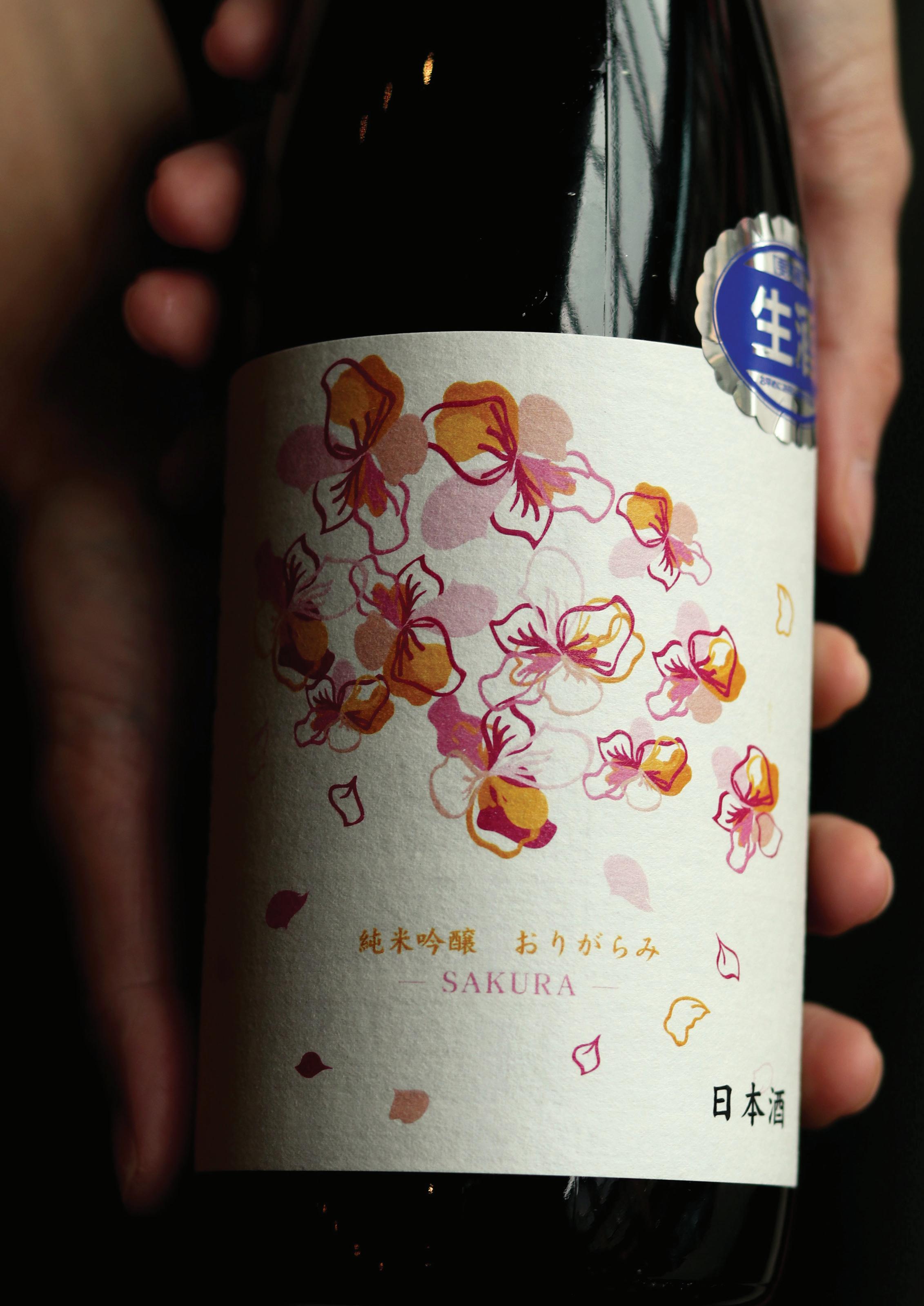
The Rise of Sommellerie: Exploring wine, sake, and whisky in Asia 20 ASI MAGAZINE OCTOBER 2022 Feature Article
Photo: Contributed
Rise of Sommellerie

Exploring wine, sake, and whisky in Asia
Just a few decades ago, wine consumption in Asia was almost non-existent, but a dramatic change in economic fortunes, the incredible rise of an upper-middle and upper class, particularly in its major urban centers has led to a boom in wine consumption. Boom may be a dramatization, as Hong Kong (an anomaly at six litres per person per annum, OIV, 2019) and Japan lead the way. Japan’s per capita consumption rate is a scant 3 litres per person per year, but this figure towers over China, the region’s biggest importer and fifth largest in the world, which is only one litre person. Consider many European nations boast consumption rates often 10 times as much as, and in the case of France more than 15 times as much as Japan, and it becomes clear there is still a long path forward to developing wine culture throughout Asia. Sommeliers in Asia are quickly becoming the gate keepers of knowledge and within them can help guide a gastronomic evolution in Asia; one that includes more wine and more sommeliers.
Rise of Sommellerie: Exploring wine, sake, and whisky in Asia
ASI MAGAZINE OCTOBER 2022 The
21 Feature
Artticle
The
I would also add that the quality and knowledge of the trade, particularly sommeliers, has increased exponentially over the last decade or so, and that has allowed a better and greater choice of the wines visible.”



A growing upper class, gastronomic diversification, and an increasingly educated sommelier and wine enthusiast communities in Asia’s biggest cities are leading the wine evolution in Asia. de la Haye says “wine consumers in Asia are somehow part of a cultural elite that have been lucky to travel abroad. They live in big cities that are opened to the world, to western life trends and trade.” Thibault also suggests these cities have also played a major role developing an interest in wine throughout Southeast Asia as “the rise of Singapore and Hong Kong as windows for western wine producers and wine culture. These cities have played a major role in Southeast Asia.”

Article





Th e Rise of Sommellerie: Exploring wine, sake, and whisky in Asia
We asked two ASI partners’ Asian directors to share their insights on the past, present, and future of wine and sommellerie in the region. Thibault de la Haye is Advini’s Export Director, Asia Pacific and Jorge Nunes is the Asia Pacific Market Manager for Symington Family Estates. de la Haye anticipates consumption rates to continue to climb but cautions expectations should be limited citing “while the consumption rate will continue to grow yet it never approach European levels. The main reason is that consumption of wine in Asia is very much linked to the way of lives of its inhabitants.” Religion, socioeconomic status and a strong rural versus urban culture clash may stymie full-fledged growth of wine culture amongst the broader populous. Currently, consumption of wine is led by Japan, Hong Kong and Singapore, although the growth according to Nunes is coming “from countries such as South Korea, Taiwan, China and Vietnam, where alcohol has been a part of the local culture for centuries. There is a growing middle-class of consumers, and the barriers for imports, albeit often involving quite high taxes, are manageable.
Nunes agrees that Asia’s big cities are leading the wine charge in Asia. As he says “wine consumption is centered in the main urban areas. Be it in China with Shanghai or Guangzhou, Seoul in Korea, Hong Kong or Singapore, it is in the larger urban centers where the consumption is larger. This comes down to several reasons, amongst which are higher salaries and therefore higher disposable income, easier access to wine, more cosmopolitan lifestyles which included better restaurants with better wine service.”
While short term growth may remain slow and steady, the real potential is long term. Nunes says “wine is still seen as a status symbol and as a product related to


22 ASI MAGAZINE OCTOBER 2022 Feature
Thibault
d e
l a
eyaH
Photo: Contributed
Photo: Contributed
Advini’s Export Director, Asia
Jorg e N senu
fine taste and culture. This is the main driver for now, though as the exposure to wine and its integration in everyday lives increases, it will eventually become more and more a commodity, and something that’s just part of a nice and healthy lifestyle.”
Both companies have been benefitting from the current ‘status symbol’ nature of fine wine on the continent. Advini has had success with Maison Champy (Beaune) and Domaine Laroche (Chablis), as well their Château Capet-Guillier and Château Patache d’Aux estates in Bordeaux. Port according to Nunes “is a niche product within a niche market,” which makes it challenging to increase says but he points to education, sommellerie as contributors to the success. Nunes says Tawny Ports are driving the market and Nunes notes the success of their Vintage Ports sold en primeur.

Nunes elaborates “Graham’s Port sits at the very top of the Port industry, being the most Premium Port focused house. Our objective has been and will continue to be, to position it at the higher end of the Port business, with its higher pricing reflecting the more artisanal approach to every aspect of production, from the wines to the packaging. This consistent work — which involves for instance, focusing in the quality on-premises — has borne fruit and Graham’s is now the driving force for Symington Family in the region in terms of value. The association with the ASI follows this direction, as we want to continue working closely with the Sommeliers, providing them with greater and better solutions to increase their Port sales.”
While both have enjoyed success in the market, they also see the potential for long term growth, inside and outside the urban centers. Supporting the potential long-term growth of the market is the continued growth of sommellerie, wine education and the development of local vineyards. Of the development of wine regions in Asia, de la Haye says, “it will contribute to the development of the wine culture and interest of the population in wine.” Nunes elaborates further say “I believe this to be a great catalyst for continuous growth of wine. Though the rise of domestic production will obviously increase competition with imports, it will greatly expand the consumer base. Lower (or none) trading tariffs, as well as lower logistical costs, will allow more competitive prices for these wines that will facilitate their access to a larger number of people. This will lead to a larger wine consumer population, which comes greater opportunities of expansion to imported wines.”
It is sommeliers supporting the growth of local wine production, and in term building a self sustainable future for themselves, and the global wine industry in Asia.
Photo: Contributed

5 The Rise of Sommellerie: Exploring wine, sake, and whisky in Asia 24 ASI MAGAZINE OCTOBER 2022 Feature Article
Regions

ASI MAGAZINE OCTOBER 2022 25 Feature Artticle The Rise
of
Sommellerie: Exploring wine,
sake,
and
whisky
in Asia 5 Wine
Discovering the Emerging Wine Regions of Asia
Khao Yai Photo: Contributed
5
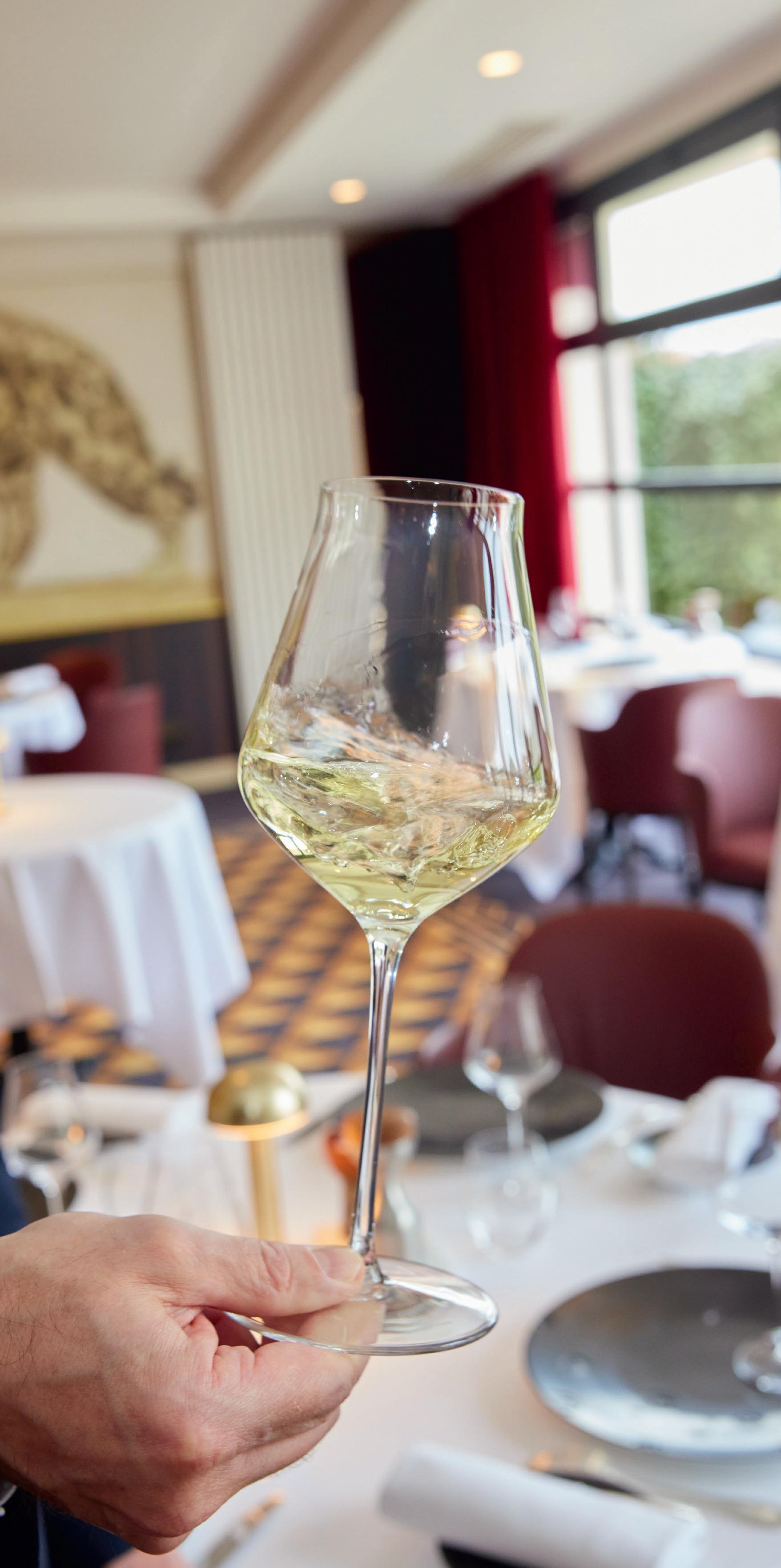






Wine with a New Altitude, Thailand’s Khao Yai GI
(Geographical indication)

Sirayu Aupping, Jr. Sommelier, Côte by Mauro Colegreco, Michelin 1-Star, Bangkok, Thailand


Thailand has a tropical climate meaning it is generally hot and humid throughout the year with unpredictable rain and even monsoons. However, in some high elevation regions benefiting from the moderation afforded by altitude and protection of the mountain ranges, viticulture is possible. Khao Yai, located just a few hours drive from the capital Bangkok, is an offi cial Geographical Indication (GI). The granting of GI status to Khao Yai, in the northwestern part of Nakhon Ratchasima province, was announced by the Thai Wine Association in 2018. Two more areas in eastern Thailand, in Chonburi and Kabin Buri provinces, are also under consideration for GI status. That said, there are additionally some interesting vineyards outside these areas such as Huahin in the province of Prachuap Khiri Khan.
The most cultivated red variety in Khao Yai, and in all of Thailand, is Syrah. In the moderately

SirayuAupp

tropical climate of Khao Yai, Syrah can produce a very exotic style of red wine, with a combination of tropical and unique baking spice aromas and flavours. Many producers are also using Syrah to produce lively rosé wines. While Syrah is the most popular, producers are also showing good results with Durif (Petite Sirah), which in this climate can deliver red wines with lively, juicy, bright red fruit and mulberry flavours, appetizingly crunchy acidity and violet and sweet spice aromas. Other red grapes planted in Thailand include Cabernet Sauvignon, Grenache, and Dornfelder. For whites Chenin Blanc and Colombard lead the way both as still table wines and as components of traditional method sparkling wines. Chenin Blanc, along with Semillon and Muscat are used to make sweet wines in the region.
While Thailand’s wine industry remains young, less than 50 years old, and the number of vineyards still few, there is a growing recognition of quality Thai wines. Increasingly these wines, some of which have gained iconic status locally, are being presented on the wine lists of restaurants, hotels, and resorts. As the gastronomic culture of Thailand grows and develops, I anticipate a parallel rise of rise of local wine production.
ASI MAGAZINE OCTOBER 2022 27 Feature
Artticle
e
Rise of Sommellerie: Exploring wine, sake, and whisky in Asia
ing
Khao Yai Photo: Contributed
Asia
Assa Valley, Kazakhstan:
Rediscover the Wines of the Silk Road
By Xeniya Volosnikova, ASI Marketing & Communications

Kazakhstan is an exotic name on the global wine map, never at the top of grape production or consumers’ mindset, yet there are archaeological fi ndings, including remains of fermented grape seeds of Vitis vinifera, dating back 2500 years. Located between Europe and Asia, Kazakhstan was part of the Silk Road, and it can be surmised the grape seeds were brought here from Caucasus, and then later from Persia. Kazakhstan total area under vine reaches its peak in the 1980s at 28 000 ha, just before the Prohibition set in place by Mikhail Gorbachev. Now there are almost 13 000 ha including table grapes.
The southern and specifically southeastern portion of the country, where the Assa Valley is located, are


the most suitable areas for winegrowing, notably with quality wine production from grapes grown in vineyards situated at the foothills of the Tian Shan Mountain chain. The mix of high rock content and sand account for the fact phylloxera has never been present in the region, accounting for some old vines being planted on their own rootstock. The climate can be described as highly continental: with winter temperatures sometimes falling as below minus 40 Celsius, and summer temperatures above 35 Celsius. Combined with an altitude of 1000 metres the diurnal temperature range of the valley can be as much as 15 degrees during the growing season. Resulting wines are powerful and fruity, yet with fresh acidity.
As for the grapes grown, varieties such as Saperavi and Rkatsiteli (both originally from Georgia) were selected due to their ability to adapt to the local climate and their high yielding nature, while prominent European Vitis vinifera cultivars such as Pinot Noir, Riesling and Cabernet Franc among others, have proved suitable for the cool continental climate. My personal favourite is Cabernet Franc Reserve from Arba Wine: cassis, black cherry and plum notes, fi ne tannins and elegant flavours of sweet spices as well as being smoky, refreshing, and fruity!

28 ASI MAGAZINE OCTOBER 2022 Feature Article
Th e Rise of Sommellerie: Exploring wine, sake, and whisky in
Xeniya Volosnikova
Kazakstan Photo: Asem Tusupbayeva
AkiSudo Japan’s Dynamic Duo

 Aki Sudo, CMS Certified Sommelier, ASI Diploma, co-owner Yoshimichi, Tokyo
Aki Sudo, CMS Certified Sommelier, ASI Diploma, co-owner Yoshimichi, Tokyo

In Japan, wine production is on the rise, as the industry has grown from 230 wineries in 2017 to 413 in 2022. Nagano and Hokuriku are two regions producing well-crafted, distinctive wines from grapes grown in vineyards that are only two to three hours away from Tokyo by train.
Nagano: the game-changer of Japanese wine

Located at the same latitude as the island of Santorini, Greece, Nagano is surrounded by high mountains, some as high as 3000 metres in elevation. The wine region boasts some vineyards

planted at elevations over 900 metres, scattered among the basins of the mountain ranges. Here, these vineyards are blessed with an ideal climate combining low annual rainfall, high diurnal temperature variation, and mostly protected from the damage caused by the region’s typhoons. Among the four sub-regions, Kikyogahara has the longest history in Nagano with Merlot as the most highly rated varietal, producing elegant wines with notable acidity and beautifully balanced tannins. Another style of note is the Chardonnay from the Chikumagawa sub-region which bursts with ripe flavours, backed with minerality and fine acidity. In 2020 and 2021, one of its major wineries, Chateau Mercian Mariko Winery was placed on the list of World’s Best Vineyards by worldsbestvineyards. com. It is worth noting that the community, as a whole is devoted to wine education and business.
Rise of Sommellerie: Exploring wine, sake, and whisky in Asia
ASI MAGAZINE OCTOBER 2022 29 Feature Artticle Th e
Hokuriku: for those looking for “something different”
In the so-called ‘NiigataWineCoast’ five wineries
Japan Photo: Contributed
Feature Article Th e Rise of Sommellerie: Exploring wine, sake, and whisky in Asia
face the Sea of Japan. In these coastal vineyards, Albariño (Alvarinho) grows in sandy soils, producing a ‘Japanese-style’ that is both pure and delicate. A side by side tasting of wines made from the indigenous Koshu varietal with Albariño, from the coastal regions of Spain, also provides an interesting comparison. At the winery restaurant Cave d’Occi, try a local Albariño with seared Nodoguro (rare fish of Hokuriku) with eggplant compote, a delicate and savoury dish to enjoy in the autumn.
Ningxia:


China’s Golden Winemaking Region

Nelson Chow, president of the Hong Kong and Greater China Sommelier Association
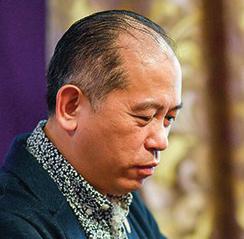
Ningxia, in the foothills of Helan Mountain, is an arid, high elevation autonomous region, recognized as China’s golden winemaking area. It is known for its Bordeaux-style blends made from Cabernet Sauvignon, Merlot and Cabernet Gersnicht (Carménère). At the end of September 2013, the ‘Helan Mountain East winery classification, Ningxia’ was issued. The foothills of the Helan Mountain East in Ningxia also became the first and currently the only wine-producing area with a classification system in China. Led by the Ningxia Wine Bureau of the Helan Mountain East, the system is similar to the 1855 Grand Cru Classé of Bordeaux with wineries entering at the fifth-growth need at least 8 years, at the minimum, to reach the status of a first-growth winery.
To be classifi ed a winery must own its own vineyard, the age of the vines must be more than fi ve years old, the winery must adhere to yield restrictions, and vinifi cation, bottling, and aging must be completed in the winery. Additionally, emphasis must be placed by the winery on tourism, leisure and cultural promotion and activities.
Assessing the wineries are the Ningxia Helan Mountain East Wine Bureau, the International Wine Organization (OIV) and a tasting team composed of wine experts. The committee scores the wineries
on a 400-point scale with 35 per cent of the score given to wine quality, 45 per cent vineyard quality, and 20 per cent tourism reception capacity. The system has received a mix of praise and criticism. While an obvious benefit to the local government of Ningxia this bias of “focusing on tourism and ignoring quality” has attracted many questions from industry insiders.
As of the latest review in 2021, there are 57 classified wineries in the list at the Helan Mountain East, Ningxia, with no fi rst-growth, 9 second-growth wineries, 15 third-growth wineries, 18 fourthgrowth wineries, and 15 fi fth-growth wineries.
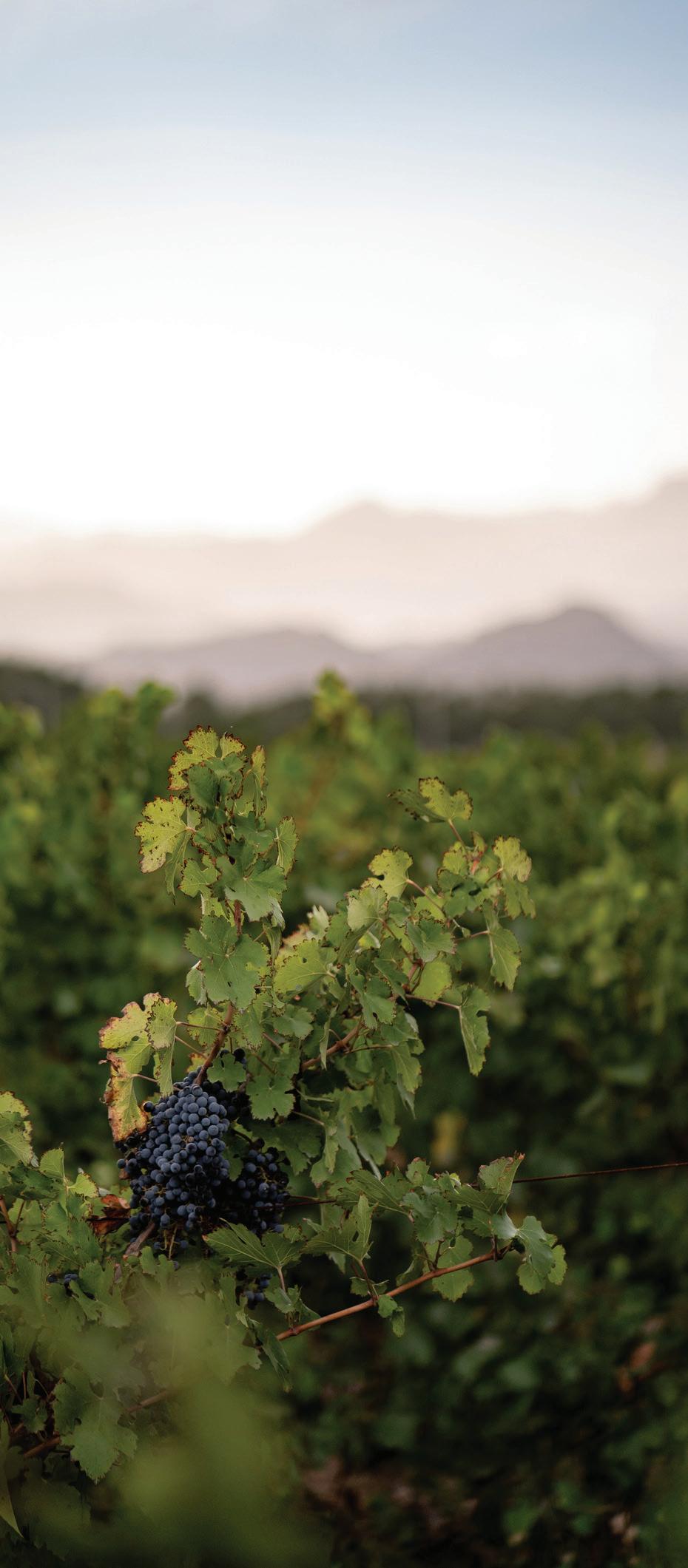
30 ASI MAGAZINE OCTOBER 2022
Ningxia Photo: Contributed
Nelson Chow
What the Locals are Drinking:

4 Regional Drinks
Arak, the spirit of Bali, Indonesia

Arak is the name of a famous grape-based spirit made in the Levante, it also name of a local liqueur that has been produced in Bali (Indonesia) for centuries, and to this day plays an important role in Balinese culture. At its core, Arak is a traditional lightly pigmented Balinese liqueur made from palm sugar, coconut, or rice sap and by comparison has a much higher alcohol content (40 to 50 percent alcohol by volume) compared to Tuak, another popular local spirit made from fermented rice. While Arak is used for mixing drinks — often mixed with ginger (Arak Mabasa), cola or with honey and lemon (Arak Madu), it is also used to make many traditional Balinese medicines and served at Hindu religious ceremonies.
Rice is an integral ingredient in Southeast Asia and particularly in Vietnam. Therefore, it is not a surprise that rice not only appears in the daily diet of Vietnamese people but is also used to make some of the best alcoholic beverages found in our country.
Nếp cái hoa vàng is the name of a unique sticky rice variety grown in the northern plains of Vietnam as well as the name of the golden spirit the rice produces. Nếp cái hoa vàng gets its name from its golden pollen (hoa vàng means golden flower). It is produced via a parallel fermentation using carefully selected natural water and “bánh men” — a combination of fungus, bacteria and yeast. After distillation, a high quality nếp cái hoa vàng will be matured for a couple months, to let the spirit’s flavours stabilize. The result is a gorgeous golden liquid with rich aromas of rice cake, cereal, yogurt, honey, and sugarcane. On the palate, the attack is mild with a harmonious sweetness and subtle musk-like and cooked mushroom flavour. However, it is in the finish
Asia

wine, sake, and whisky
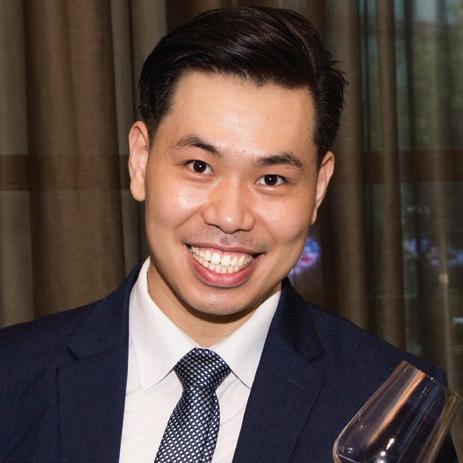
ASI MAGAZINE OCTOBER 2022 31 Feature Artticle
Ngurah Koriawan, Sommelier, Director of Food and Beverage Padma Hotel Legian, Bali
Nếp Cái Hoa Vàng, Northern Vietnam’s Favourite Distilled Rice Beverage
Lincoln VU, Head Sommelier for Đa Lộc – WeWine, Northern Vietnam
Th e Rise of Sommellerie: Exploring
in
NgurahKoriawa n Lincoln VU



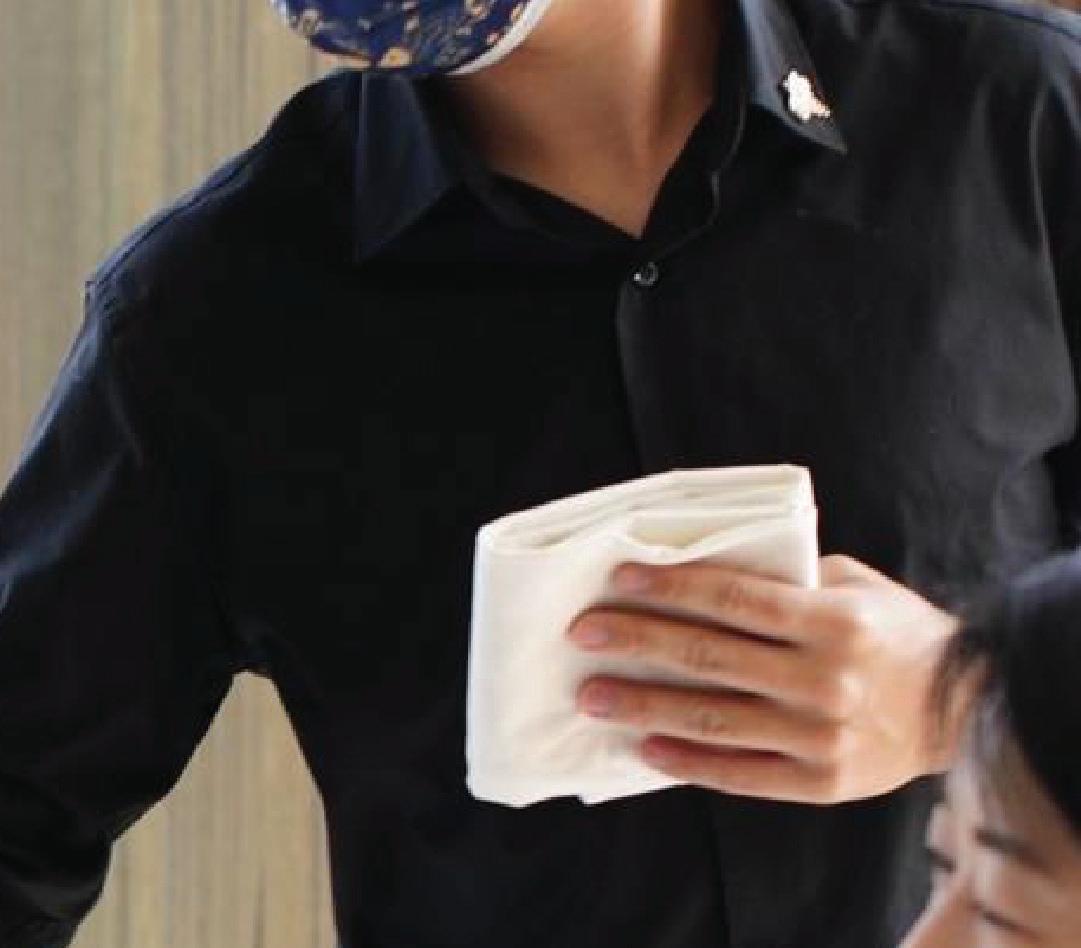



ASI MAGAZINE OCTOBER 2022
Chan Siang Jyun Photo: Contributed
where nếp cái hoa vàng really distinguishes itself from other fermented rice-based beverages, as there is a long, lingering, and vivid finish.
To best enjoy its flavours serve nếp cái hoa vàng slightly chilled at 14ºC in a bowl-shaped glass. Depending on the alcohol and sweetness level of the individual producer, “nếp cái hoa vàng” can make a versatile pairing for many starchedbased comfort foods such as Vietnamese summer rolls, stir-fries, phở, as well as some dry aged meat dishes served in a sweet, fermented sauce. The latter is best with an aged nếp cái hoa vàng. Personally, I love enjoying a glass of nếp cái hoa vàng with nem phùng (fermented pork), a famous dish originally from the outskirts of Hanoi made with boiled pork cut into strips, then mixed with a roasted and ground combination of two types of rice and soybeans. The mixture is then wrapped in fig leaves or banana leaves before it’s tied into square-shaped packs. The synchronization of flavours and aromas from both sides really shine through while the drink’s sweetness balances the salty and spicy fish sauce, also used in preparation of the dish.
Lambanog: The Spirit of the Philippines
Ian Santos, Best Sommelier of the Philippines 2019
The Philippines is known for its people, hospitality, and food. While there are several types of food and beverages the country produces and exports to several countries, there’s one liquor that has been stealing the spotlight — Lambanog.
Lambanog is known as coconut wine, also dubbed as the Philippine vodka. It is produced by distillation of naturally fermented coconut sap. It is clear white;
with natural aromas you would naturally get from distilled coconut. Known for its high alcohol content, lambanog has minimum of 30 per cent alcohol and can be used as a base spirit, as you would vodka or gin, for cocktails.
Drinking lambanog is widely popular in rural areas during gatherings, birthday parties, and other celebrations. It is mostly produced and consumed in the Southern Tagalog Region of the country. It is gaining popularity, especially within a younger demographic, who are drinking flavour infused versions. One producer making a buzz is ‘Lakan,’ as they are producing high-quality lambanog with artful precision and refinement.
Chan Siang Jyun, Sommelier Sinasera 24, Taiwan
ChanSiangJy
While Paolyta B and Whisbih are unlikely to be served at the finest Taiwanese restaurants, they are popular amongst Taiwan’s working class, and for this reason represent to me the real culture and people of Taiwan. These ‘energy’ drinks, made from taurine (a naturally occurring sulfurcontaining amino acid), sugar, alcohol, and the liquid extract of traditional Chinese medicine, are popular amongst the Taiwanese working class, including waiters, who will enjoy them as a refreshment while working but also on days off in stir fry restaurants in the company of classic Taiwanese cuisine. Taiwanese will often drink them in combination with cola, milk, coconut milk (the most popular combination), juice or even tea or coffee.







ASI MAGAZINE OCTOBER 2022 33 Feature
Artticle
Th e
Rise of Sommellerie: Exploring wine, sake, and whisky in Asia
Paolyta B and Whisbih: Taiwanese Thirst Quenchers
IanSantos
u n
The Rise of Sommellerie: Exploring wine, sake, and whisky in Asia
5Acclaimed Whiskies from Asia & Oceania to have on your backbar
The roots of whisky production in Asia start in Japan. Japanese whiskies were made in the 1800s, but it was the development of the Yamazaki distillery, outside of Kyoto, in 1924 that instigated commercial production of the spirit. Over the past century, the high quality of Japanese whisky has inspired entrepreneurs throughout the region to embark on their own journeys of crafting this cherished brown spirit.
SULLIVAN’S COVE FRENCH OAK (Australia)
Quite possibly the brand that put Australian whisky on the map. The Tasmania based distillery relies on its pure spring water, locally grown barley, and a pot still they affectionately call Myrtle to craft a rich, robust style with ample molasses, treacle, hazelnut and fresh leather aromas and flavours.
THE NEW ZEALAND WHISKY COLLECTION OAMARUVIAN CASK
STRENGTH DOUBLEWOOD (New Zealand)
This complex cask strength dram, originally distilled by the now defunct Willowbank distillery was matured in ex-bourbon casks then finished in French oak previously used to age New Zealand red wine. It also spent 8 years maturing in the coastal community of Oamaru’s Harbour Precinct, which lends a subtle sea spray note to this fruity and spicy whisky.
AMRUT (India)
The legend of India’s first single malt whisky is
well-known around the world. This complex, floral, spicy, and subtly sweet whisky is notably made from hand-picked Indian barley grown in the foothills of the Himalayas. Amrut was the first single malt whisky in India, but certainly not the only. Rampur Select from Radico Khaitan Distillery is also gaining a loyal fan base.
KAVALAN VINHO BARRIQUE (Taiwan)
While Japan makes the most famous Asian whiskies, Taiwan’s Kavalan distillery also makes some of its most celebrated. Their Kavalan Vinho Barrique, matured in re-toasted American white oak barrels previously used to age wine, both red and white, was even awarded World’s Best Single Malt at the 2015 World Whisky Awards.
SUNTORY HIBIKI 17 YEARS OLD (Japan)
There are no shortage of celebrated Japanese whiskies with the likes of Suntory’s Yamazaki 12 Years Old and 18 Years Old, and if your customers can afford it, their 55 Years Old (according to winesearcher.com the average retail cost is approximately 850,000 Euro), Hashuku 12 Years Old, Akkeshi Sarorunkamuy, Akashi, Kikori, and Nikka’s range of whiskies, such as its prized and rare Taketsuru, all widely acclaimed. Suntory Hibiki 17 Years Old is a prestige blend of more than 30 individual aged malt and grain whiskies matured in mizunara casks at their Yamazaki distillery. The result is a harmonious (Hibiki translates to harmony) fruit forward whisky, that is distinguished yet at approximately 550 Euros per bottle still possible to serve by the glass at fine whisky, wine bars, and fine dining restaurants.
34 ASI MAGAZINE OCTOBER 2022
Feature Article

ASI MAGAZINE OCTOBER 2022
Photo: Contributed

Learn. Challenge. Compete. ASI Bootcamp Malaysia 36 ASI MAGAZINE OCTOBER 2022 Happenings
LEARN. CHALLENGE. COMPETE. ASI Bootcamp Malaysia
Photos: Andy Kho
Last month, ASI successfully hosted the second edition of ASI Bootcamp. This time, Bootcamp took place in Malaysia, marking the event’s first foray into Asia. With an organizational group, largely comprised of the same team as the first event in Poland, held last year, the second edition proved to be even more seamless than the first. Claire Berticat, ASI’s Director of Marketing & Partnerships oversaw the event along with ASI Vice-President Asia & Oceania, Saiko Tamura-Soga, and ASI Vice-President Europe, Piotr Kamecki.
Of the event Berticat says “as with any complex event like this success is only a result of the dedication of the people involved. In addition to a very organized Malaysian team supporting us we had a group of dynamic, experienced, and talented tutors, and highly engaged sommeliers in attendance. Their excitement and constant desire to learn more brought a palpable sense of joy to the event. They ‘drank’ in the knowledge of our tutors and relished in the information presented by our dedicated partners. As an association charged with educating, inspiring a global sommelier community, we can all take a lot of satisfaction in what has been accomplished at our recent ASI Bootcamp.”
Others involved included Xeniya Volosnikova managing the communications and partnership relations while Poland’s David Sojka managed logistics, supported by members of the Sommelier Association of Malaysia (SOMMLAY). Argentina’s Maria Laura Ortiz and reigning ASI Best Sommelier of the World Marc Almert oversaw content, while a star-studded lineup of tutors, instructors from ASI’s global family, including ASI Diploma recipients, Masters of Wine, Master Sommeliers, former and

current ASI Best Sommelier of the World (Giuseppe Vaccarini, Marc Almert).
Of the Bootcamp, Piotr Kamecki says “overall this was a great example of Bootcamp. Over the two days, we conducted 20 seminars featuring both wine country presentations, as well as theoretical Master Classes focused on aspects of service, food, and wine pairing etcetera. There was also 6 focused blind tastings. These tastings were organized so that participants had the opportunity to taste with all the tutors during Bootcamp which gave them a variety of perspectives.” Part of the appeal of ASI Bootcamp is the global nature of the participants and the tutors, as unlike contests which have a natural competitive atmosphere, Bootcamp’s while incredibly rigorous, also provide an opportunity for attendees to share knowledge and build a global network of like-minded sommeliers.
Attendees offered a wealth of praise for the Bootcamp’s organization. Vu Duc Linh (Vietnam) says “it (ASI Bootcamp) exceeded my expectations. It was an honour to meet so many talented sommeliers, and also the big names in the business.” For Britt NG “the most enjoyable sessions were all the blind tastings we got experience, facilitated by different industry leaders, and featuring different styles of wines. I really learned a lot. It really opened my eyes and gave me so much information for preparing for exams and competitions.”
WATCH THE RECAP
Happenings
ASI MAGAZINE OCTOBER 2022 37
Learn. Challenge.
Compete. ASI Bootcamp Malaysia
VIDEO OF ASI BOOTCAMP MALAYSIA HERE
SommelierS International tasting in Champagne

In October, SommelierS International organized its traditional tasting in Champagne, chaired by Salvatore Castano, Best Sommelier Europe and Africa.
During which, sommeliers, bloggers, influencers, wine merchants, restaurateurs and regional associations of the Union de la Sommellerie Française, gathered around a festival of bubbles and shiny colors, with golden reflections. A taste of celebrations for this beautiful event that has become unmissable.
Once again, it was in the sumptuous salons of the town hall of Reims that the winegrowers and Champagne houses were able to share and discover their wines produced with passion.











With a hundred cuvées, the tasters were able to appreciate the diversity of the bottles presented, with astonishing terroirs and blends, and confirmed the adage wearenottalkingaboutchampagnesbut about Champagne wines. A personality specific to each wine, a cuvée specific to each personality.
Before concluding the tasting, all the participants were invited to a gourmet lunch in the main hall of the town hall.




Another very nice moment of exchanges where everyone was happy to meet.
For a report on the event, see us on our newsstands at the end of November, or on our website: www.sommeliers-international.com


The ASI Bootcamp Malaysia Masterclasses:
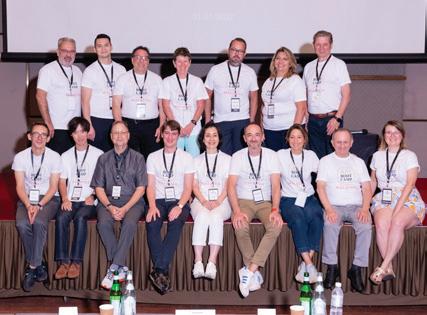


Theoretical Masterclasses:
HOW TO PREPARE A STUDY PLAN
Speaker: Henri Chapon, MS, DipWSET
HOW TO USE THE TASTING GRID –Sommelier Guidelines ASI Speaker(s): Sören Polonius & Julie Dupouy


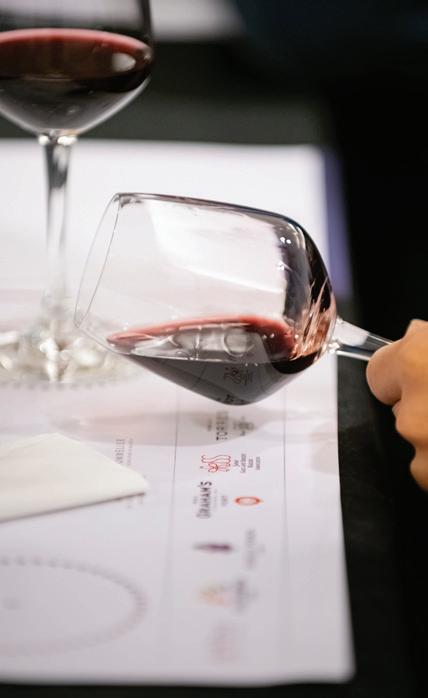
FOOD AND WINE PAIRING Speaker: Evan Goldstein, MS
HOSPITALITY: How to organize an event for both small and large groups Speaker: Mathias Camilleri, MS
WINE LIST: Secrets for a successful selection Speaker: Paz Levinson, ASI Gold Plus Diploma
WINE SERVICE AND DECANTATION
Speakers: Marc Almert (ASI Best Sommelier of the World 2019), ASI Gold Excellence Diploma & Sören Polonius
SALES
Speaker: Giuseppe Vaccarini (ASI Best Sommelier of the World 1978), ASI Gold Excellence Diploma
RIOJA DOCa Speaker: Doug Frost, MS MW
CHAMPAGNE AOP
Speaker: Toru Takamatsu MS, ASI Silver Diploma
Partner Masterclasses:
TASTE THE DIFFERENCE: the impact of the closure on the wine evolution Speaker: Marc Schelcher (Vinventions)
OLD VINES WITH A GREAT FUTURE – South African Chenin Blanc Speaker: Dr Edo Heyns (AdVini South Africa)
GRAHAM’S VINTAGE PORT: The difference between the Vintages Speaker: Jorge Nunes (Graham’s)
SOUTHERN RHÔNE THROUGH 3 APPELLATIONS: Châteauneuf-du-Pape, Gigondas and Vinsobres Speaker: Florian Garrigues (Famille Perrin)
ANCESTRAL GRAPE VARIETIES
Speaker: Joelle Marti-Baron (Familia Torres)
WINE OF MOLDOVA: unveiling gems of a surprising small country with great wines Speaker: Robert Joseph (Wine of Moldova)
Happenings
Challenge. Compete. ASI Bootcamp Malaysia
ASI MAGAZINE OCTOBER 2022 39
Learn.
Somm Perspectives


How to recommend a wine
Recommending a wine ... it’s at the heart of sommellerie. This outwardly simple task is inherently the way a sommelier can elevate a guest’s dining experience, using their knowledge of wine to find the perfect option for the occasion. While making recommendations based on a sommelier’s own experiences and knowledge is part of the process, great sommeliers, gather information from guests, marrying their own opinions with the expectation, preferences of and specific occasion being enjoyed by their guests.
ASI as part of its commitment to educating and supporting the development of sommellerie launched the ASI Grids and ASI Tutorials. The ASI Tutorials are a collection of videos covering the aspects of sommelier training that the written word (the ASI Grids) cannot capture in full, including how to recommend a wine.
WATCH THE VIDEO HERE.
40 ASI MAGAZINE OCTOBER 2022
How to recommend a wine
ASI asked Jacques Chua Shu Hui, who has previously represented Singapore at the ASI Best Sommelier of the World contest and is currently Assistant Head Sommelier of Singapore’s 67 Pall Mall and Jessica Wood, a certified sommelier with the Court of Master Sommeliers, Head Sommelier at Wellington’s Noble Rot Wine Bar and co-founder, owner of Wine-oji® to explain how they recommend a wine.

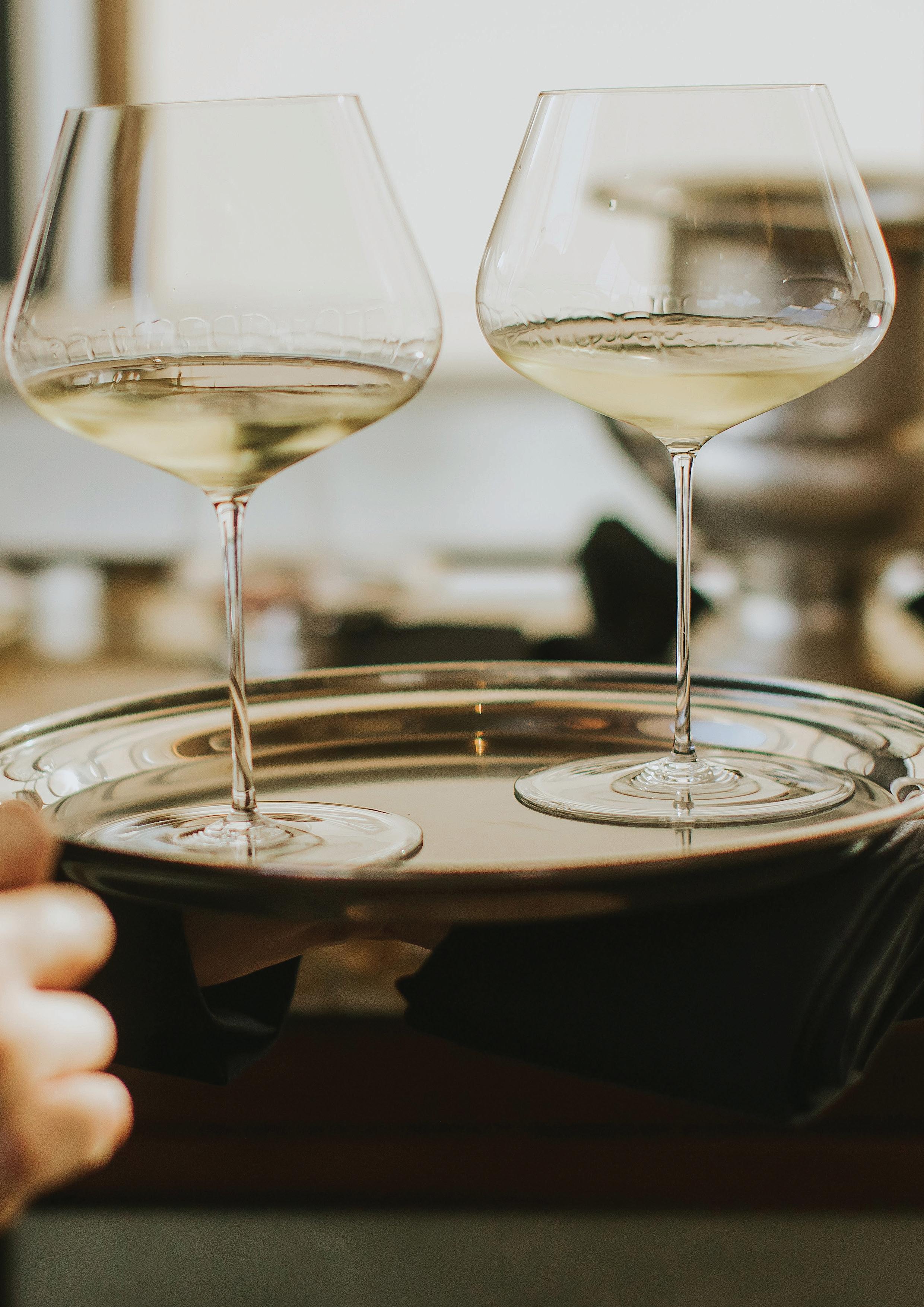
S h u H iu



Perspectives
ASI MAGAZINE OCTOBER 2022 41 Somm
How to recommend a wine
Pall Mall Service Photo: Contributed
Jacques Chua
Somm Perspectives
How to recommend a wine
ASI: When approaching a table, guest for the firsttime, what type of information are you trying to gather from them?
Jacques Chua Shu Hui (JCSH): With technology nowadays, a lot of restaurants have a past record of a guest’s visit. I will look at their reservation to check what they had previously to get a sense of what they might want to drink. If it is a first timer, I probably will try to ask more technical questions of what style of wines they are looking for or what they usually drink to have a sense of what they may prefer.
Jessica Wood (JW): The most important information I can gather from a new table is conveyed in their body language. When I’m approaching a table to greet the guests for the first time, pouring water, or presenting a menu, it’s vital for me to establish the guests’ mood and reason for their occasion, and who is likely to be selecting the wine. Are they a walk-in or booking? Do they seem relaxed and out for a good time, or do they appear to be weary after a long day at work? Establishing mood is essential for me to assess how much interaction my guests will want or need throughout the evening to provide a tailored experience. It’s the most important 10 to 30 seconds of my approach. I can also tell a lot from how a guest reads the wine list as often that gives me an indication of how much they are into their wines. Are they hurriedly scanning the list looking for something familiar, or perusing it with interest and intrigue? Assessing these small clues are integral to my service because it informs the role I need to play for that table of guests. My initial interaction with new guests is a chance for me to establish trust and if the opportunity presents itself, perhaps suggest an initial beverage to help break the ice. For example, suggesting a magnum of Prosecco for a group of ladies on a weekend away means that no-one needs to be the first to choose a drink for the table, but rather can relax into the evening and enjoy their conversation together.
ASI: How important is it for you to determine what type of occasion it is for the guests at the table? Does it influence how you interact with the guests, or should a sommelier provide the exact same service style regardless of the situation?
JCSH: I feel that it is quite important to understand what type of occasion the guests at the table are celebrating. This may in turn determine the budget and preference of wines to recommend for the table. For instance, a formal business meeting
with prospective business partners may require a bottle that is more recognizable and within in a moderate budget range. However, in the case of a celebration of a signed deal, the host may be willing to spend more on a premium bottle. If it is a fun night out with friends who are wine lovers, they may choose a bottle of a lesser-known grape and region to taste. I feel a sommelier should adapt to the situation to best recommend the wines
JW: The most important interaction from me is to approach with a genuine smile and always maintain good posture at the table, it makes guests feel immediately at ease with their surroundings and softens the sometimes-intimidating task of choosing a wine for the table. I feel it is important to be ready to read a table and adapt my service accordingly. Our business revolves around people, and no two people or occasions are the same. A table of corporates often requires a discrete level service where everything runs smoothly in the background. I am not the centre of their experience but rather my role is to pre-empt their needs and provide a seamless experience that makes the host and his or her company look good. That table may not want the same attention or level of service as a romantic couple enjoying a degustation, where I have significant involvement and influence in their experience. The reason for a guest visiting my restaurant will influence my beverage recommendations. The business executive who dines with his board of advisors on Wednesday may drink different wines to when he revisits on Saturday night with his family. He may be more open to try different wines. Similarly, a first-time guest will have different needs and requirements from me than a returning customer who comes for my attention. I try to offer advice in such a way that the guest feels that they made a good decision. I never take a guest’s impression of me for granted; I like to get to know their needs intimately to be able to pre-empt their wishes, but don’t allow familiarity to affect my philosophy as a hospitality professional.
ASI: In terms of finding a wine to best suit your guests’ palates, tastes, are there any specific questions you ask to assess their preferences? Are there techniques you use to decode the customer’s personal language of wine? As we know, not every customer can articulate their preferences like a sommelier.
JCSH: I usually check what they feel like having today. I try to narrow down their preferences by asking leading questions like would you like a ‘light, medium or full-bodied wine? One with crisp acidity, is fruity, buttery or savoury in style?’ Once I get a
42 ASI MAGAZINE OCTOBER 2022
Somm Perspectives


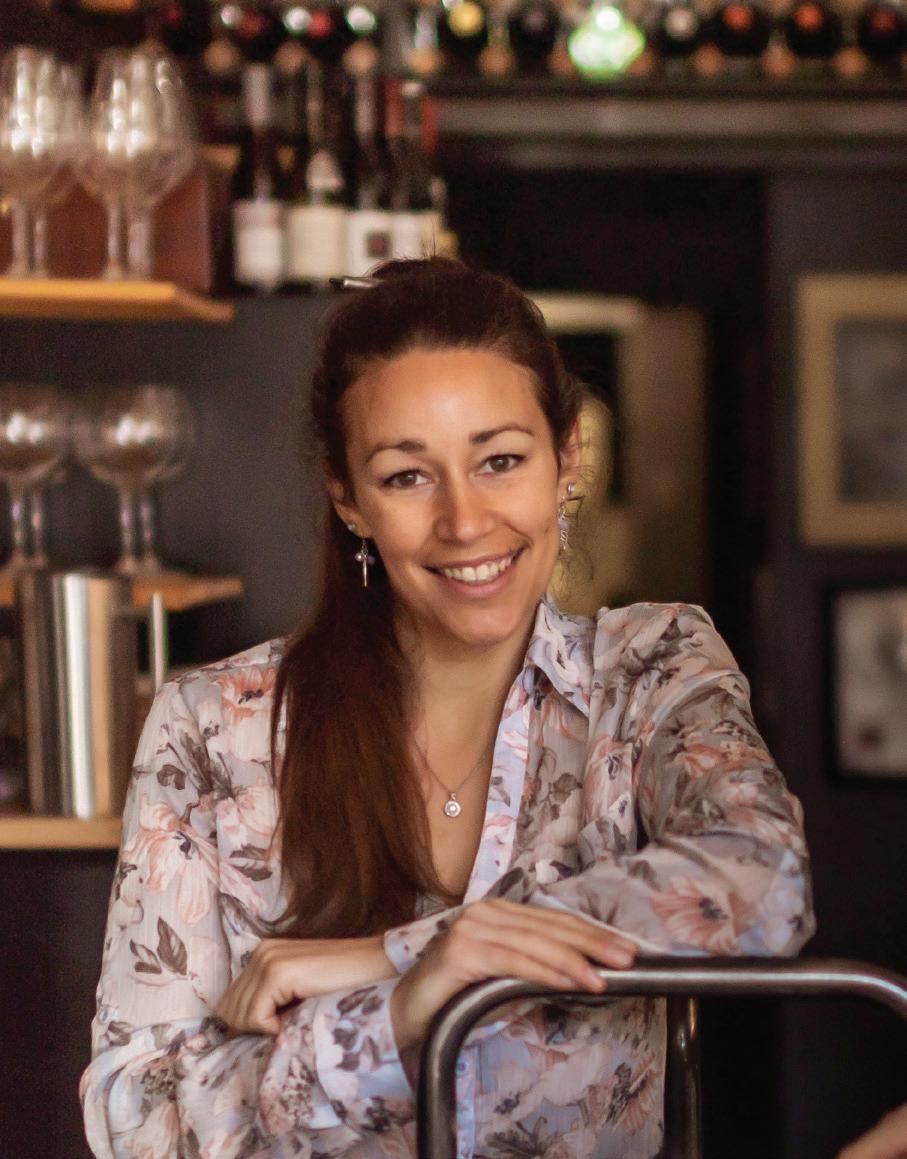
recommend a wine

ASI MAGAZINE OCTOBER 2022 43
How to
Jessica Wood Photo: Contributed
Jessica Wood Photo: Contributed
Noble Rot Restaurant Photo: Contributed
Noble Rot Duck Photo: Contributed
Somm Perspectives

44 ASI MAGAZINE OCTOBER 2022
How to recommend a wine
67 Pall Mall Spirits Cabinet Photo: Contributed
sense of direction, I will recommend three different wines with different price points, with a short description of the taste profile of each to see if it suits their wants.
JW: This is something which we see increasingly often in the restaurant setting. Recent research shows that in general, people’s knowledge of wine globally is diminishing, however their confidence in buying and drinking wines is increasing, due to instantaneous access to the internet and ability to gather information at our fingertips. If someone comes across an unfamiliar description on a wine menu, for example Brut Nature or Sur Lie, they can simply google it on their phone at the table. At the same time, most people know whether they like a particular taste or not, but often don’t have the vocabulary to translate that to their sommelier. How often do we hear people say, ‘I don’t like Chardonnay’ when they mean ‘I don’t like the taste of new oak’? My initial question is usually driven by which section of the wine list they are looking at. For example, someone who is in for a white wine will have different requirements to someone who is looking at the selection of Bordeaux. There are usually two types of guests: those who know what they like and those who are willing to be adventurous. For some people, comfortable brands and styles are the go-to for others it’s up to me to lead them on a wine journey and broaden their palate and tastes. If the guest has already given me some parameters, for example ‘I’m after a nice glass of Pinot Noir’, I would start by asking styles of Pinot they prefer or usually drink, as that narrows down the selection quite quickly from which I can make a few suggestions. When describing a wine, terminology is an important technique in helping guests understand how a wine feels on their palate. People generally won’t ask for a wine with ‘resolved tannins’ or a ‘long finish’, but someone might ask for a mediumbodied red wine, or something ‘big and bold’. Colourful language is also important in making the wine sound attractive without being pretentious, for example, ’vibrant red fruits’ conjures the image of an opulent wine. I continue to read people’s facial expressions in reaction to my description. Quite often they are looking for me to recommend the very wine that they want even if they can’t see it on the page. Ultimately, guests want to feel guided by advice but responsible for making a good decision, especially if they are ordering for the table.
ASI: How, or do you, address price sensitivities? Is that your responsibility to ask or do you prefer to leave it up to the guests to determine if your selections are within their price range?
JCSH: For a business meal, I usually point at the wine list for the price and check if it is suitable without mentioning the price, some guests will get back to you and tell you the range that they are looking at by pointing to another range. Sometimes, when I know it may be a casual meal with their family or friends, I will ask them directly ‘what is their expected price range?’ so that I can find a wine within those parameters.
JW: For me this depends on a few important factors: firstly, whether the guest is dining for the first time in the restaurant and what the occasion is. It’s easy for someone to google what a wine is worth but now more than ever people are looking for a personal experience. The price someone will pay for a bottle of wine comes a lot down to trust — how comfortable and confident they feel in the establishment, it’s ambience, quality of the food, the glassware, quality of the service and their sommelier’s recommendation — if they trust that they are getting good value for money, they might be prepared to spend more than they originally intended in exchange for a better experience. I tend not to ask my guest how much they are willing to spend on a bottle as it may put them in an uncomfortable position (am I spending enough, or will I be judged for my budget?). Instead, I feel it is my responsibility to arrive at a correct price range through my questions around style and preference. Quite often, but not always, a special occasion or business deal may mean a more flexible budget to impress. If it’s a family occasion, they may prefer a more affordable wine of an approachable style that can be readily enjoyed by many. It’s important to be financially sensitive to the individual and approach the situation with empathy. For example, never assume that just because they purchased Grand Cru Burgundy with their colleagues last week that they are looking for a bottle at a similar price point this week. I much prefer to recommend an affordable wine tailored to the guest’s preferences which will be enjoyed, versus an expensive wine which may not for the sake of making a big sale. They are far more likely to order a second bottle with my recommendation or return and trust me on another occasion. Sometimes, it also depends on the order I present the recommendations — if I give three suggestions at three different price points based on the style they are looking for, often they will trust me to help guide them to the correct decision appropriate for their meal and occasion
ASI: How important are a guests’ menu selections to your wine recommendations?
Perspectives
Somm
to recommend a wine
ASI MAGAZINE OCTOBER 2022 45
How
Somm Perspectives
How to recommend a wine
JCSH: I think this is very subjective. I usually will check their food order to match at least a dish in their order. But I also felt that not everyone want a food and wine pairing, they probably just want a bottle that they prefer to drink for the meal.
JW: Sound knowledge of the restaurant menu is an inherent part of a sommelier’s ability to recommend suitable matching wines. Typically, I look to adhere to the fundamental rules of wine and food pairing and match the complexity of the wine to the complexity of the dish, paying close attention to sauces, condiments, and powerful elements of the dish within its overall composition. It helps that I have a keen interest in different cuisines and often experiment with different flavours and textures when cooking. Understanding the key rules for complementing or contrasting food with wine is a chance to express knowledge and competence in our role and is important for establishing trust with guests and expanding their enjoyment of wine. I see a menu selection as an opportunity to lead guests through their wine journey and provide a memorable experience. Perhaps I’ll have the chance to showcase an outstanding but classic pairing, or an unusual pairing that takes the guest out of their comfort zone. Degustation menus are a wonderful way to showcase the restaurant as they illustrate the harmony between the menu offering and the wine list, thus elevating the restaurant experience.
ASI: There is a global locavore trend. How, or does, local play into your wine recommendation thought process?
JCSH: I am based in Singapore, where we have a diverse number of cuisines and different ethnics groups. As a result, there is a lot of fusion
cooking with both western and Asian dishes being presented on the same menu. I must consider a lot of about the sauce and spices involved in the creation, and provenance, of the dish before recommending a suitable bottle.
JW: In New Zealand the wine drinker is more conscious than ever about where their wine came from and how it was made. We are seeing trends in ‘natural’ wines, skin contact wines, vegan wines, drier styles, low/no alcohol alternatives, to name a few. As a generalisation I think that the locavore trend is a state of mind. At Noble Rot we have a large selection of New Zealand and international wines available by the glass, and for the bottle selection, New Zealand wines are broken down into sections according to varietal and region. During the global pandemic we saw a shift in the psyche of New Zealanders, from travelling vicariously through drinking international wines (because there was no physical travel), to drinking locally to support the suffering domestic market in a difficult time (at various stages of lockdown). Typically, when we have plenty of international travellers, we have more New Zealand wines available, as guests visit us to sample the many different varieties and styles which New Zealand offers. Our menu offering is predominantly focused on seasonal New Zealand ingredients, so our wine list is sensitive to this and mindful of the flavours of the kitchen. All these factors affect my decision-making process when selecting wines for the list, particularly by the glass. Having an acute awareness of current trends and mood of wine drinkers, and being able to adapt accordingly, directly impacts the wines we list and talk about during service.
ASI: Overall, after your guests leave the restaurant, what do you want them to think about your service, and recommendations?

46 ASI MAGAZINE OCTOBER 2022
Pall Mall Decanter
Photo: Contributed
JCSH: I want them to truly enjoy the wines recommended and are comfortable to come back the next time to tell me that they are open to try different types of wines.
JW: Ultimately the greatest compliment I can receive from any guest is a return visit to the restaurant. That is confirmation that collectively with my team we delivered a satisfying experience which left the guests feeling replete and taken care of. For me, it’s an opportunity to represent the sommelier industry
every day and illustrate the intricacies and validity of our role to any guest’s dining experience. I like to leave the impression that my service was exclusive, professional, and attentive, yet genuine and friendly, and delivered with a passion and ease as if they were the only guests in the restaurant, so that they want to come back for another experience and explore further recommendations. I wish my guests to feel as if I welcomed them into my home — the only difference is that they need to pay the bill at the end
We presented both Jacques and Jessica a typical scenario, asking them how they might approach the situation. What wines would you recommend?
A couple from Western Europe are on vacation in your country and have booked a table for two at your restaurant to celebrate their anniversary. They want to enjoy food you believe best represents your restaurant style and is made with local ingredients. They are open to eating anything. They mostly drink French wines, but don’t have a particular affinity to any one varietal, colour, or style.
JCSH: As I work for 67 Pall Mall in Singapore, our cuisine is a mix of both Asian dishes and classic British dishes from London. I usually check with guests what they would have in mind for the night. I usually recommend 2 to 3 different wines from different countries or the same country if they want to stick to a theme for the evening. For this couple, I will recommend them to try some of our signature Asian and classic dishes with wines from France, for the pairings. A great dish to start with is our Steak Tartare and Bang Bang Burrata (Burrata cheese with an Asian inspired sauce of black vinegar, trio of peppercorn and sesame and crushed peanut, served with a side of fried dough called you tiao), paired with a glass of Bourgeois Diaz BD’RS Rosé de Saignee Brut Nature NV Champagne to match both dishes. The heavier weight of this juicy red cherry fruit-centric style of Rosé Champagne and the crisp savoury acidity note complements the dishes without being overpowered by strong flavour and refresh the palate after each sip. As for main courses, Classic Beef Wellington and a local favourite, our Tandoori GG French Chicken Leg. A glass of Domaine Comte Abbatucci Ministre Imperial Ajaccio 2015 from
Corsica, with its juicy dark cherry notes with notes of thyme, rosemary and savoury notes of cumin and cardamon will compliment the spices used for the curry and the tandoori seasoning. A wine that has rustic-style tannins will also cut through the fattiness of the meat. Finally for dessert, my selections are our Sticky Date Pudding and Apple Cobbler. Here I’ll go to Southern France and such as Rivesaltes Ambre Vin Doux Naturel by Domaine des Chênes 2008. The wine displays notes of dried dates and fruits characters with notes of spices like vanilla, cinnamon, nutmeg, a glass that will match both desserts.
JW: Noble Rot offers modern cuisine focussed on seasonal and predominantly local New Zealand produce. This would be the perfect occasion to showcase classic French varietals from different regions of New Zealand, sharing stories of some of our most iconic wines, to create a special and memorable experience appropriate for the occasion. To celebrate the couple’s anniversary, I would suggest beginning with half a dozen Te Matuku oysters paired with a glass of NV Esses ‘Pia’ Extra Brut Méthode Traditionnelle from Kaikōura, followed by entrées of Cured Akaroa Salmon paired with Pegasus Bay Bel Canto Riesling from Waipara, North Canterbury and Seared Coromandel Scallops with Millton Clos de Ste. Anne La Bas Chenin Blanc from Gisborne. Main course would showcase our New Zealand produce including Canterbury Duck with Neudorf Moutere Pinot Noir from Nelson, alongside our 55-Day Aged Wakanui Beef Eye Fillet with Dry River Syrah from Martinborough. To finish, a small selection of New Zealand cheeses paired with Rippon Gamay from Wanaka, Central Otago followed by dessert of Millefeuille with Paritua ‘Isabella’ Late Harvest Semillon-Sauvignon from Hawke’s Bay.
Perspectives
Somm
to recommend a wine
ASI MAGAZINE OCTOBER 2022 47
How

ASI MAGAZINE OCTOBER 2022 Marrying Wine and the Soulful Flavours of Asia 48 Make Me a Match! M MAKE ME A MATCH! Marrying Wine and the Soulful Flavours of Asia
Food is a gateway to understanding culture. Classic regional dishes have recipes that have been passed down for generations, sometimes dating back centuries, if not millennia. Many of these dishes are often windows onto the soul of a country, speaking not only to the country’s culinary past, but all the cultural influences that have shaped it.
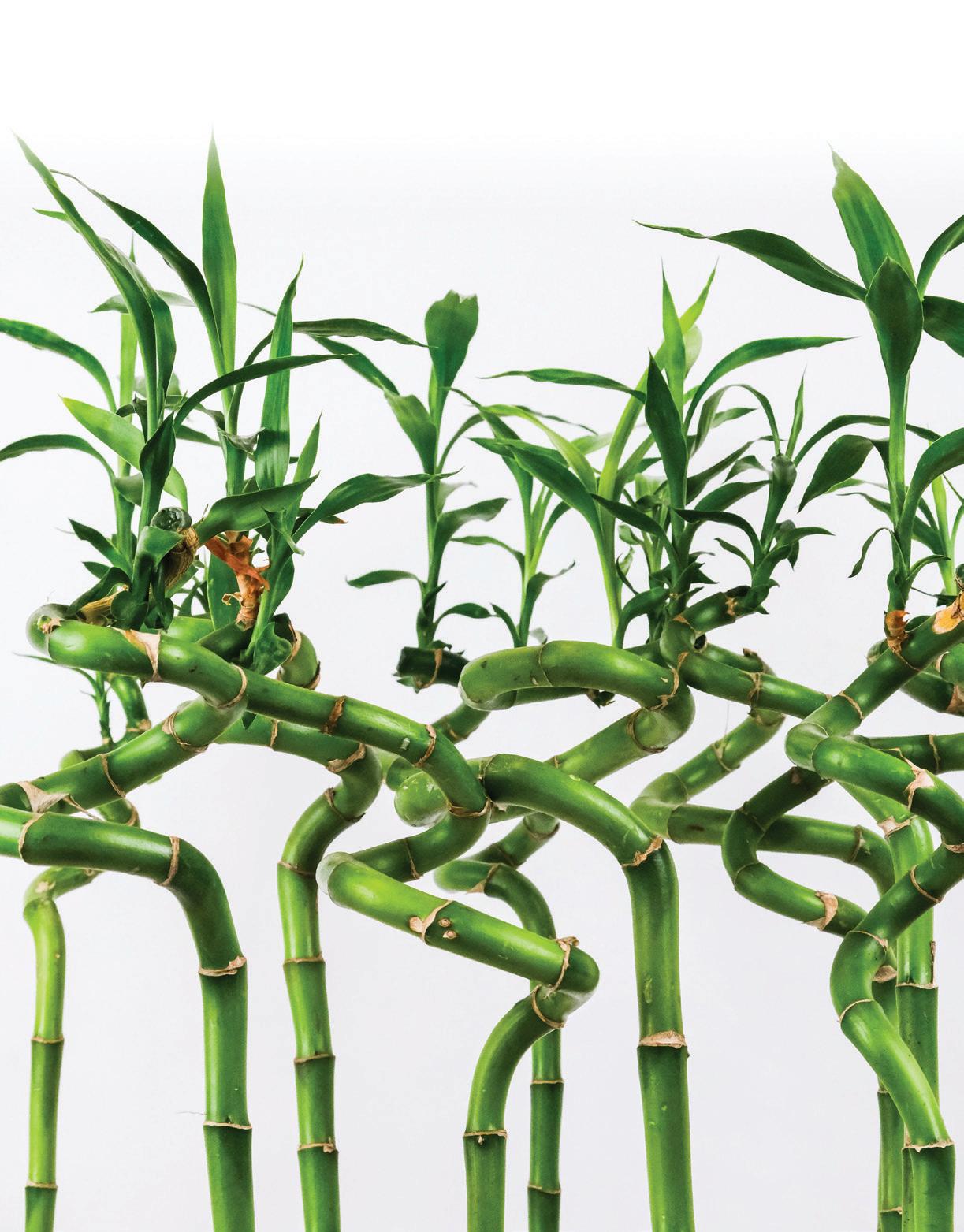
Not surprisingly when asked to pair their favourite foods from their home countries, sommeliers abound with insightful recommendation, that come from their heart, soul and mind.

ASI MAGAZINE OCTOBER 2022
Marrying Wine and the Soulful Flavours of Asia
49 Make
Me a Match!
Photo: Louis Hansel / Unplash.com
Photo: Feey / Unplash.com
South Korea
Local Flavour: Bibimbap mixed rice
Pairing: 2020 Grand Coteaux Cheongsoo, South Korea
Sommelier: Jungmin Ahn

Head Sommelier, SPC Group Restaurant: Bicena Seoul, Lotte World Tower
About the Dish:
This dish was a long-time signature dish of “Bicena-Seoul;” the Lotte World Tower, 81 st floor, Michelin-star restaurant. This dish is based on Korean rice cooked with radish greens, seasoned aster, bracken, bellflower and mung bean jelly, and is prized by the restaurants’ clients for its tradition and unique flavours. It is garnished with edible flowers and served with a chef-prepared soy sauce, along with side dishes called “Ban-Chan.”

About the Pairing:
My perfect pairing is always based on the philosophy “Sin-to-bul-yi ( 신토불이 )” which translates to “body and soil are one.” The most famous Korean food is Bibimbap (mixed rice). Bibimbap does not have a strong flavour, but it does give the traditional flavours of Korea, which are experienced with every bite. Our version is special because it is prepared with a homemade soy sauce, using our chef’s secrete recipe. It’s not too salty, but has a lot of flavour. I suggest pairing the dish with a Korean wine, the 2020 Grand Coteaux Cheongsoo. The wine has a delicate citrus and flower nose, and has a perfect balance between acidity and sweetness. It’s a great match to bibimbap.
50 ASI MAGAZINE OCTOBER 2022 Marrying Wine and the Soulful Flavours of Asia Make Me a Match!
Photo: Ranurte / Unplash.com

ASI MAGAZINE OCTOBER 2022 51
Marrying Wine and the Soulful Flavours of Asia
Make Me a
Match!
Bibimbap Photo: Contributed
Local Flavour: Rendang Daging Pairing: Zinfandel Sommelier: Tan Chuan Ann
Malaysia Best Sommelier Champion 2022, Head Sommelier Resort World Sentosa, Singapore Restaurant: Nipah, EQ Kuala Lumpur
Malaysia Japan
Local Flavour: Kabayaki grilled eel with Japanese pepper (山椒 / Sansho )
Pairing: 2016 Cabernet Franc Grace Wine, Chuo Budo-shu, Yamanashi, Japan
Sommelier: Yuya Kondo

Beverage Director of Lʼécrin Group in Tokyo, 3rd place in Best Sommelier Competition in Japan, 2020

About the Dish: Rendang Daging is beef braised in coconut milk, toasted grated coconut, lemongrass, galangal, and turmeric leaf, and is generally eaten with glutinous rice cooked with turmeric.
About the Pairing: Rendang Daging is a rich and flavourful dish. I would select Zinfandel from California to match the intensity of the dish. The wine offers a luscious mix of ripe red and black fruits like blackberry, raspberry, cherry and the typical coconut and sweet baking spices elements. The pleasant sweetness of Zinfandel compliments the rich sauce’s juxtapose of sweet and spicy flavours perfectly, while its polished tannins and elegant acidity elevate the flavours of the beef.
About the Dish: Kabayaki grilled eel has been popular in Japan for a long time. Kabayaki is slowly grilled over charcoal and brushed with a sweet soy sauce. It has very deep and savory taste on its own and when we eat Kabayaki, we sprinkle a bit of sansho pepper on it. Sansho is the original Japanese spice. Sansho offers a spicy accent as well as a notable has yuzu-like flavour which blends harmoniously with the Kabayaki.
About the Pairing: I highly recommend Cabernet Franc made by Ayana Misawa, one of Japanʼs leading producers, with this dish. Yamanashi, where this wine is made, has a lot of sunshine and little rain. So, grapes ripen well, which translates, in this wine, concentrated aromas of berry, along with violet, and attractive spicy notes such as vanilla, black pepper. In terms of structure the wine delivers elegant acidity, a smooth texture and well-integrated tannins. It is bringing out deep taste of sweet soy sauce and spicy flavor of Cabernet Franc enhance to Sansho pepper also, toasty note of wine and scent of charcoal grilled spreads comfortably in your mouth.
52 ASI MAGAZINE OCTOBER 2022 Marrying Wine and the Soulful Flavours of Asia Make Me a Match!


ASI MAGAZINE OCTOBER 2022 53
Marrying Wine and the Soulful Flavours of Asia
Make
Me a Match!
Rendang Daging Photo: Contributed
Kabayaki Photo: 123RF.com
Singapore Rise of an island wine nation






A conversation with sommelier Gerald Lu
Over the past 60 years, since it gained self governance (1959) and sovereign nation status (1965) Singapore has risen from comparative poverty to become a regional economic power, and subsequently a leader in gastronomy, wine consumption, and sommellerie in Asia. The island nation, which lies just north of the equator, off the southern tip of the Malay Peninsula, has for centuries been a stopping ground and trading post, linking Oceania, Southeast Asia with neighbours to the north and east. As a hub of commerce, Singapore’s population subsequently reflects this with a mix of heritage, religions, and cultures. This is reflected in its cuisine which has Chinese, Malay, Indian, Tamil, and British influences, the latter reflecting its time as a British colony.
Gerald Lu of the Singapore Sommelier Association, and Head Sommelier at Praelum Wine Bistro suggests the diversity of its cuisine will only increase as “(in this century) Singaporeans have become more well-travelled and disposable incomes have risen. These factors coupled with daily lives revolving around the internet and social

Singapore: rise of an island wine nation 54 ASI MAGAZINE OCTOBER 2022 Feature Article
Photo: Lily-banse
/ Unsplash.com
media has seen the entire food and beverage sector thrust into the limelight, a lot more than in the 80s or 90s. And not all of it is traditional fine dining. Lu elaborates: “Singapore is a young country with a lot of drive and interest (in gastronomy), leading to many (restaurateurs) always trying to push forward. However, there is still an existing pool of second-generation Singaporeans, as such a lot of tradition and history can still be found in pockets around the city. This has created a well-rounded dining scene where Singaporeans are aware, accepting and attracting new dining concepts and embracing cultures from all over the world both in the upper and lower truncheons of gastronomy. There is a strong movement to keep traditional local dishes alive, but also welcome a modern breed of hawkers and food vendors who are aspiring to keep local food interesting and exciting.”
This vibrant and exciting blend of cultures, traditions, modernism, and traditionalism has meant especially exciting times for gastronomy and sommellerie in Singapore. In the 1990s wine service,

and the few sommeliers at the time in Singapore, was mostly limited to fine dining, but according to Lu “interestingly now it is not just the fine dining restaurants that are pushing boundaries and interest in wine and sommellerie, but a whole slew of independent restaurants and wine bars, operated both by local and foreign talent.”
The rise of sommellerie, and broader wine culture, is reflected in consumption numbers. According to Stastista.com wine sales in Singapore are projected to grow by 11.92% between 2022-2025, and by 2025 79% of spending (57% of volume) of wine consumption will be at bars, and restaurants. Which bars and restaurants is still to be determined. As the economic prowess of Singapore rose over the last couple of decades, Singapore saw a dramatic rise in “Michelin” and celebrity chef restaurants, both local and foreign chefs such as Anne Sophie Pic and Alain Ducasse, although Lu suggests for every celebrity chef restaurant that opens, another closes.
The island nation now boasts more than 50 restaurants with star ratings from the Michelin Guide including three 3-star and seven 2-star
ASI MAGAZINE OCTOBER 2022 55
Feature Article
Singapore:
rise of an island wine nation
Photo: Contributed
restaurants. Lu, who qualifies his response “this is purely my opinion and not based in statistical fact” elaborates “from a public perspective, Michelin drove a lot of excitement in the first few years, but subsequently as the years went by, the chatter seems to have mellowed out. Comments online have mellowed, and the amount of media interest has also waned with the public seemingly less keen or influenced by Michelin on whether a restaurant is deemed good or not. I know a lot of ‘Michelin’ restaurants who generate less revenue than similarly sized restaurants with smaller guest check averages, some (Michelin star restaurants) of which still struggle to attract talent to work for them and a good number of them don’t have a proper certified sommelier in the establishment.”
While Michelin and celebrity chef restaurants may not wield the same power they once did, Lu says “Michelin has given many establishments a reason to keep striving for better and that is without a doubt an influential point in terms of the development of gastronomy and sommellerie.”
The very diversity of Singapore’s gastronomy and restaurant scene is leading to sommeliers applying their trade in a broad range of establishments. This fusion of culinary styles, and breadth of restaurants, is both a blessing and challenge for sommeliers in Singapore. Lu says of the

gastronomy scene “there are local crosses (of cuisine), local-foreign crosses and foreign-foreign crosses. The best part is they exist across different price points, catering to different demographics.” In fine dining specifically, there Singapore boasts a large number of modern and contemporary restaurants, but also restaurants focused on local flavours. According to Lu “it is a blessing for sommeliers as they have a wide array of restaurants to choose from. But it is also challenging for sommeliers to perform at a high level of proficiency because many keep jumping between restaurants, and due to staff shortages owners of restaurant groups keep moving others from one concept to another. This leaves the sommelier with a gap in terms of experience which is one of the factors required to hone proficiency. In short, our sommelier talent pool is small and growing, but we still are not growing fast enough to cater to the speed at which concepts are opening up.”
As for what sommeliers are serving. Not surprisingly given the economic prowess of the nation, and wine consumption highest amongst its upper class, sales of classics such as Napa Valley, Bordeaux, Burgundy, Champagne, Rhone, Tuscany, Piedmont, Rioja, Barossa, and Margaret River carry the most weight on wine lists.
56 ASI MAGAZINE OCTOBER 2022
Feature Article Singapore: rise of an island wine nation
Photo: iStock
With a nod to the increasingly diversity of gastronomy, and the pride Singapore has of accepting all cultures Lu says “if there is a country with a winery that is hyped up or enjoys media limelight, you can be assured it will be on the radar of wine lovers here, including up and coming Asian wines. Asian wines from countries such as India, China and Japan are on most lists with sommeliers running them, but at small volumes, and Southeast Asian wines are also represented at the best wine bars, at the very least.”

As for the future, Lu expects sommeliers to take a cue from climate change, so he expects to see more wine from cool climate regions, as well as more island-wines and tropical wines are also on his radar. Jokingly he adds “the other trend in the industry that will inevitably be picked up here is the need to be different, just so a concept stands out in a sea of top-notch restaurants. So, if you are a weird or unheard-of country making or attempting to make wine, there will be a small market in Singapore that will buy these wines regardless of quality.”

ASI MAGAZINE OCTOBER 2022 57
Feature Artticle Singapore: rise of an island wine nation
Photo: Ethan Chan / Unsplash.com
Photo: Contributed
MEMBER NEWS
The Sommelier Association of Malaysia (SOMLAY) has crowned Tan Chuan Ann the winner of the Malaysia Best Sommelier Championship, following a competition held at The Gardens Hotel in Kuala Lumpur. The contest was overseen by Chief Judge Teng Wee Jeh and Roderick Wong, the Competition Technical Director. Also assisting in the judging panel were Wong Yin How of Vintry Group, Daisuke Kawai of La Terre Singapore and Asia Best Sommelier in French Wine winner, along with veteran wine judge and renowned mixologist Shawn Chong.

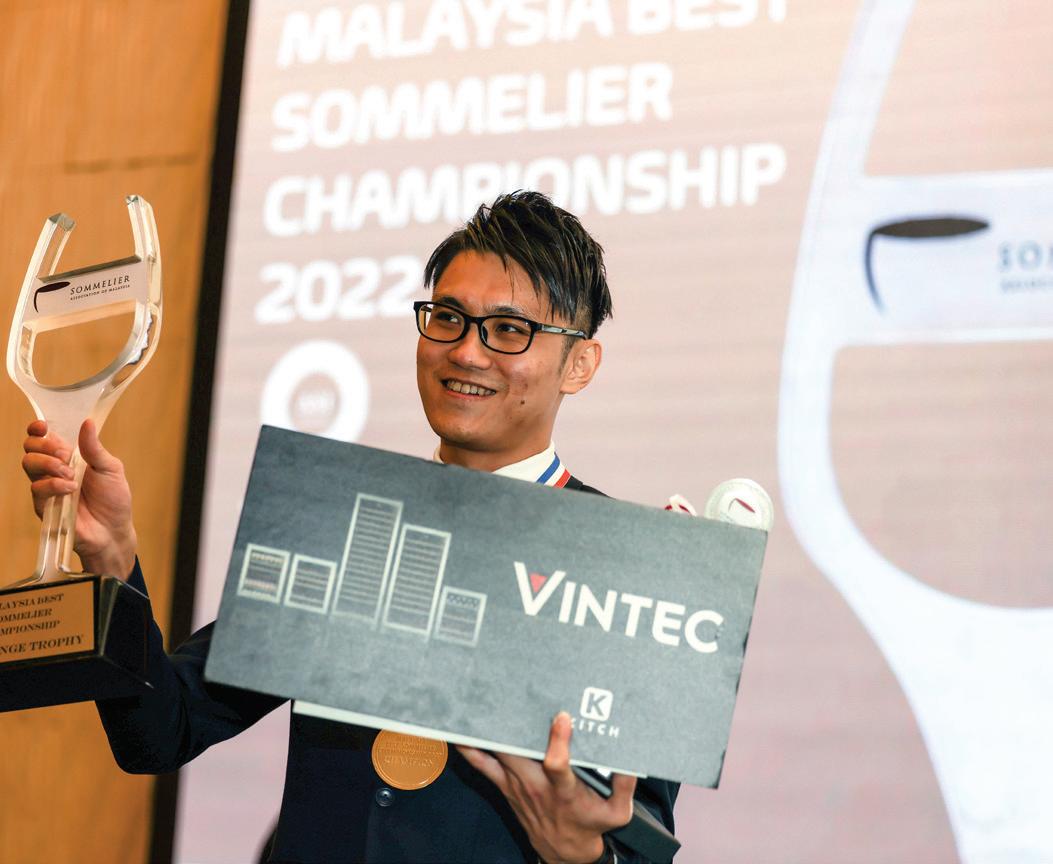
The competition was held over two days and featured eight sommeliers. Following a first day of service, tasting and written theory, a gala dinner featuring Chilean wine pairings as selected by former Malaysia Best Sommelier Championship winners. Namely, Peter Teng,
Britt Ng, Justin Ho and Yong Yi Ying. On the second day of the competition, the top three competitors, and those advancing to the finale were announced. Peter Teng, Britt Ng and Tan Chuan Ann were given a total of eight tasks to perform. While the judges were impressed by the performances of each of the finalists, it was Tan Chuan Ann who emerged victorious.
SHANI RAMAWMY IS THE BEST SOMMELIER OF MAURITIUS 2022
Altough, less than 15 years old, the Mauritius Sommelier Association has proven itself a capable organization. Under the direction of Jérôme Faure, the association continues to flourish. Over the course of its history is has awarded the title of Best Sommelier of Mauritius six times. The latest winner is Shani Ramasawmy, sommelier and wine event coordinator for the Constance Hotels & Resorts group, who along with the other entrants competed in front of an audience of respected judges including internationally acclaimed French sommelier David Biraud, Anja Cramer (owner Contratto Estate, Piedmont), sommelier Margareta Krpciarova, Melissa Oxenham (Oxenham Company), Alexandre Harel (Bacchanal Company), Best Sommelier of Mauritius 2016 Jeff Thomé and Thierry Kasprowick, President of the Reunion Island Sommelier Association, and François Pages, Export Director Africa, Indian Ocean and Middle East for Gerard Bertrand.
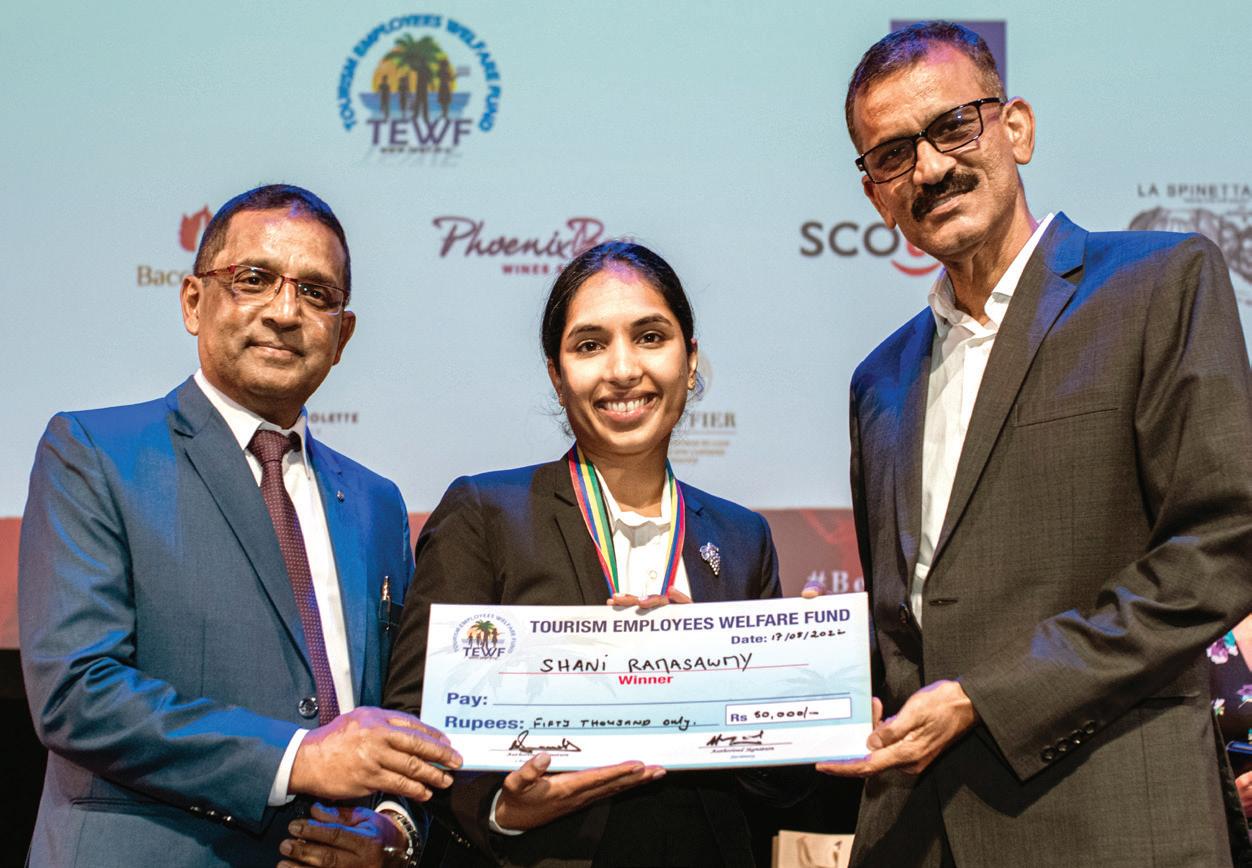
ASI MAGAZINE OCTOBER 2022 58 News Member and Industry News
TAN CHUAN ANN WINS MALAYSIA BEST SOMMELIER CHAMPIONSHIP 2022
Tan Chuan Ann Photos: Contributed
Shani Ramawmy (centre) Photo: Contributed
KAMILĖ BARTUSEVIČIŪTĖ IS LITHUANIA’S NEWEST SOMMELIER CHAMPION


The winner of the Lithuanian Sommelier Championship 2022 is Kamilė Bartusevičiūtė. Kamilė Bartusevičiūtė bested Edgards Kazokaitis, Gycis Pečiulis and guest sommelier, Estonian Aleksei Pogrebnoi, in the finale. The final competition was judged by ASI Best Sommelier of Europe & Africa 2017 Raimonds Tomsons, Arminas Darasevičius, President of the Lithuanian Sommelier Association, Martynas Pravilonis and Narimantas Miežys, both former Best Sommelier of Lithuania champions, Head of the Lithuanian Sommelier School Arūnas Starkus, wine expert Darius Miler, and the President of the Estonian Sommelier Association Kristjan Markii.
Daejoen Convention Centre in Daejeon, South Korea Jungmin An emerged victorious. Mr. An, who is Head Sommelier of SPC Group, one of the largest food and beverage companies in the country, will now represent South Korea at the upcoming ASI Best Sommelier of Asia & Oceania contest.

AND THE BEST SOMMELIER OF LATVIA 2022 IS ... DMITRIJS SINKEVIČ
In September Dmitrijs Sinkevičs outlasted the competition in a finale marked by rigorous tasks that challenged the competitors to complete them in the allotted time. As the owner of the Best Sommelier of Latvia title,
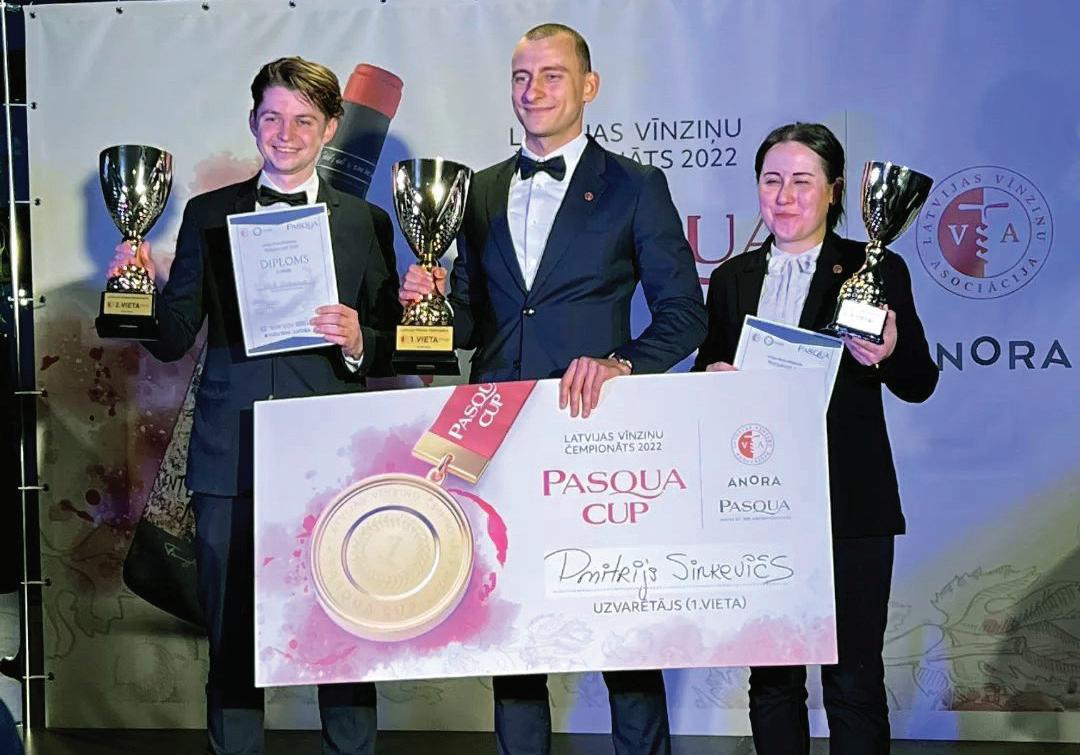
Sinkevič joins the likes of Raimonds Tomsons, and Kaspars Reitups, both of whom have had success on the regional and international stage.
SMALL CITY SOMM, WINS TITLE OF BEST SOMMELIER OF IRELAND
Anke Hartman, the German-born sommelier of Galway’s diminutive The Lamplight Wine Bar has won the title of the Best Sommelier of Ireland. Hartman is a trained chef turned sommelier, who has previously worked at top restaurants throughout Europe before setting in Ireland in 2008, where she had worked at notable establishments including the Cliff House Hotel (Waterford), Drury Buildings and The Dean & Devlin Hotel in Dublin.
JUNGMIN AN IS THE BEST SOMMELIER OF SOUTH KOREA
Following a well-contested competition held at the
ASI MAGAZINE OCTOBER 2022 59 Member and Industry News News
Kamilė Bartusevičiūtė
Photo: Contributed
Anke Hartman (right) Photo: Contributed
Dmitrijs Sinkevičs (centre)
Photo: Contributed
Jungmin An Photo: Contributed
INDUSTRY NEWS
OIV 2021-2022 AWARDS CEREMONY AT THE CITE DU VIN, BORDEAUX
A Première! The OIV Awards ceremony took place for the very first time at the Cité du Vin in Bordeaux on September 30. After the 2020 ceremony was held online due to the Covid pandemic and the 2021 gala was cancelled due to restrictions imposed by the French government, this Awards ceremony brought together 50 winners and 100 participants from the 2021 and 2022 editions.
The ASI was honored thanks to three great friends of the association awarded for their books. Indeed, Philippe FaureBrac, Best Sommelier of the World 1992, ASI treasurer, was distinguished for his book on

wine and food, Jacques Orhon, founder of the Association of Sommeliers of Canada and host of the Mondial 2000 contest which crowned Olivier Poussier, won the Literature Prize for his novel “Les Fruits de l’Exil” and Jean-Vincent Ridon, ASI Gold Sommelier, member, among others, of the Board of the Zimbabwe Association and of the ASI Exams Committee, saw his beautiful book Passion For Pairing rewarded for its texts as well as for the photos taken by Gerda Louw.
They were awarded by the president of the jury of the OIV Awards, Azelina JabouletVerchere, and the scientific secretary, Richard Pfister.
Note that the OIV Awards, created in 1930, promote literature,
photography, history and creativity in the world of wine and vineyards.
The event was celebrated by the President of the OIV, Luigi Moio, who gave an opening speech in which he stressed the importance of culture in the world of wine and vine.
On the sidelines of the 2021 and 2022 Awards, the OIV signed a memorandum of understanding with the Foundation for Wine Culture and Civilizations to strengthen their collaboration. Both entities are determined to continue working together to promote the cultural aspects inherent in the sector “against the enemies that try to endanger the legitimacy of wine,” said the Director General of the OIV, Pau Roca.
60 ASI MAGAZINE OCTOBER 2022 Member and Industry News News
Photo : Contributed
2022
A year full of celebrations for AdVini!
The first: that of the 150-year anniversary of the Jeanjean family epic adventure! The Jeanjean family settled in the Languedoc region in St Félix de Lodez in 1872 and remains there to this day. Amid the phylloxera crisis, Etienne-Maurice Jeanjean, nicknamed “Le Père La Minute”, embarked body and soul into the wine business. Six generations later, the Jeanjean family continues to instill a pioneering, vanguard philosophy, audacity, and unique savoir-faire. They have consistently believed in the tremendous potential of the Languedoc appellations and contributed to the revival of this wine region by promoting its many terroirs.



Today, Vignobles Jeanjean has nine estates, all organically farmed and located in the most beautiful winegrowing zones in the region. Brigitte Jeanjean, a sixth-generation member of the Jeanjean family, and Technical Director Matthieu Carliez work together to develop distinctive, satisfying wines that are intense, fruity, bright, balanced and fresh.
The second is that of the 10th anniversary of AdVini South Africa. The story began in 2012 with the boutique Stellenbosch Pinotage producer, L’Avenir Wine Estate, and has continued over the decade, making AdVini South Africa a leading player in Stellenbosch. Today, AdVini South Africa boasts fi ve leading properties in Stellenbosch: L’Avenir Wine Estate, Ken Forrester Vineyards, Le Bonheur, Kleine Zalze and Stellenbosch Vineyards.

AdVini South Africa embodies one of the finest examples in the world of intercultural success and cooperation between two major wine countries, with collaboration through research and development, winemaking exchanges, and social development and environment sustainability (ESG). With these multifaceted collaborations, Advini South Africa is specifically devoted unlocking the fine wine potential of Stellenbosch, through investment in vineyards and people.



 2022 is a year full of feasts for AdVini which celebrates not one but two anniversaries.
2022 is a year full of feasts for AdVini which celebrates not one but two anniversaries.










 SARAH HELLER
SARAH HELLER


















 By Vinexposium
By Vinexposium





































 Aki Sudo, CMS Certified Sommelier, ASI Diploma, co-owner Yoshimichi, Tokyo
Aki Sudo, CMS Certified Sommelier, ASI Diploma, co-owner Yoshimichi, Tokyo






































































































 2022 is a year full of feasts for AdVini which celebrates not one but two anniversaries.
2022 is a year full of feasts for AdVini which celebrates not one but two anniversaries.
